Developing Problem-Solving Skills for Kids | Strategies & Tips

We've made teaching problem-solving skills for kids a whole lot easier! Keep reading and comment below with any other tips you have for your classroom!

Problem-Solving Skills for Kids: The Real Deal
Picture this: You've carefully created an assignment for your class. The step-by-step instructions are crystal clear. During class time, you walk through all the directions, and the response is awesome. Your students are ready! It's finally time for them to start working individually and then... 8 hands shoot up with questions. You hear one student mumble in the distance, "Wait, I don't get this" followed by the dreaded, "What are we supposed to be doing again?"
When I was a new computer science teacher, I would have this exact situation happen. As a result, I would end up scrambling to help each individual student with their problems until half the class period was eaten up. I assumed that in order for my students to learn best, I needed to be there to help answer questions immediately so they could move forward and complete the assignment.
Here's what I wish I had known when I started teaching coding to elementary students - the process of grappling with an assignment's content can be more important than completing the assignment's product. That said, not every student knows how to grapple, or struggle, in order to get to the "aha!" moment and solve a problem independently. The good news is, the ability to creatively solve problems is not a fixed skill. It can be learned by students, nurtured by teachers, and practiced by everyone!
Your students are absolutely capable of navigating and solving problems on their own. Here are some strategies, tips, and resources that can help:
Problem-Solving Skills for Kids: Student Strategies
These are strategies your students can use during independent work time to become creative problem solvers.
1. Go Step-By-Step Through The Problem-Solving Sequence
Post problem-solving anchor charts and references on your classroom wall or pin them to your Google Classroom - anything to make them accessible to students. When they ask for help, invite them to reference the charts first.

2. Revisit Past Problems
If a student gets stuck, they should ask themself, "Have I ever seen a problem like this before? If so, how did I solve it?" Chances are, your students have tackled something similar already and can recycle the same strategies they used before to solve the problem this time around.
3. Document What Doesn’t Work
Sometimes finding the answer to a problem requires the process of elimination. Have your students attempt to solve a problem at least two different ways before reaching out to you for help. Even better, encourage them write down their "Not-The-Answers" so you can see their thought process when you do step in to support. Cool thing is, you likely won't need to! By attempting to solve a problem in multiple different ways, students will often come across the answer on their own.
4. "3 Before Me"
Let's say your students have gone through the Problem Solving Process, revisited past problems, and documented what doesn't work. Now, they know it's time to ask someone for help. Great! But before you jump into save the day, practice "3 Before Me". This means students need to ask 3 other classmates their question before asking the teacher. By doing this, students practice helpful 21st century skills like collaboration and communication, and can usually find the info they're looking for on the way.
Problem-Solving Skills for Kids: Teacher Tips
These are tips that you, the teacher, can use to support students in developing creative problem-solving skills for kids.
1. Ask Open Ended Questions
When a student asks for help, it can be tempting to give them the answer they're looking for so you can both move on. But what this actually does is prevent the student from developing the skills needed to solve the problem on their own. Instead of giving answers, try using open-ended questions and prompts. Here are some examples:

2. Encourage Grappling
Grappling is everything a student might do when faced with a problem that does not have a clear solution. As explained in this article from Edutopia , this doesn't just mean perseverance! Grappling is more than that - it includes critical thinking, asking questions, observing evidence, asking more questions, forming hypotheses, and constructing a deep understanding of an issue.

There are lots of ways to provide opportunities for grappling. Anything that includes the Engineering Design Process is a good one! Examples include:
- Engineering or Art Projects
- Design-thinking challenges
- Computer science projects
- Science experiments
3. Emphasize Process Over Product
For elementary students, reflecting on the process of solving a problem helps them develop a growth mindset . Getting an answer "wrong" doesn't need to be a bad thing! What matters most are the steps they took to get there and how they might change their approach next time. As a teacher, you can support students in learning this reflection process.

4. Model The Strategies Yourself!
As creative problem-solving skills for kids are being learned, there will likely be moments where they are frustrated or unsure. Here are some easy ways you can model what creative problem-solving looks and sounds like.
- Ask clarifying questions if you don't understand something
- Admit when don't know the correct answer
- Talk through multiple possible outcomes for different situations
- Verbalize how you’re feeling when you find a problem
Practicing these strategies with your students will help create a learning environment where grappling, failing, and growing is celebrated!
Problem-Solving Skill for Kids
Did we miss any of your favorites? Comment and share them below!
Looking to add creative problem solving to your class?
Learn more about Kodable's free educator plan or create your free account today to get your students coding!
Kodable has everything you need to teach kids to code!
In just a few minutes a day, kids can learn all about the fundamentals of Computer Science - and so much more! With lessons ranging from zero to JavaScript, Kodable equips children for a digital future.
Center for Teaching
Teaching problem solving.
Print Version
Tips and Techniques
Expert vs. novice problem solvers, communicate.
- Have students identify specific problems, difficulties, or confusions . Don’t waste time working through problems that students already understand.
- If students are unable to articulate their concerns, determine where they are having trouble by asking them to identify the specific concepts or principles associated with the problem.
- In a one-on-one tutoring session, ask the student to work his/her problem out loud . This slows down the thinking process, making it more accurate and allowing you to access understanding.
- When working with larger groups you can ask students to provide a written “two-column solution.” Have students write up their solution to a problem by putting all their calculations in one column and all of their reasoning (in complete sentences) in the other column. This helps them to think critically about their own problem solving and helps you to more easily identify where they may be having problems. Two-Column Solution (Math) Two-Column Solution (Physics)
Encourage Independence
- Model the problem solving process rather than just giving students the answer. As you work through the problem, consider how a novice might struggle with the concepts and make your thinking clear
- Have students work through problems on their own. Ask directing questions or give helpful suggestions, but provide only minimal assistance and only when needed to overcome obstacles.
- Don’t fear group work ! Students can frequently help each other, and talking about a problem helps them think more critically about the steps needed to solve the problem. Additionally, group work helps students realize that problems often have multiple solution strategies, some that might be more effective than others
Be sensitive
- Frequently, when working problems, students are unsure of themselves. This lack of confidence may hamper their learning. It is important to recognize this when students come to us for help, and to give each student some feeling of mastery. Do this by providing positive reinforcement to let students know when they have mastered a new concept or skill.
Encourage Thoroughness and Patience
- Try to communicate that the process is more important than the answer so that the student learns that it is OK to not have an instant solution. This is learned through your acceptance of his/her pace of doing things, through your refusal to let anxiety pressure you into giving the right answer, and through your example of problem solving through a step-by step process.
Experts (teachers) in a particular field are often so fluent in solving problems from that field that they can find it difficult to articulate the problem solving principles and strategies they use to novices (students) in their field because these principles and strategies are second nature to the expert. To teach students problem solving skills, a teacher should be aware of principles and strategies of good problem solving in his or her discipline .
The mathematician George Polya captured the problem solving principles and strategies he used in his discipline in the book How to Solve It: A New Aspect of Mathematical Method (Princeton University Press, 1957). The book includes a summary of Polya’s problem solving heuristic as well as advice on the teaching of problem solving.

Teaching Guides
- Online Course Development Resources
- Principles & Frameworks
- Pedagogies & Strategies
- Reflecting & Assessing
- Challenges & Opportunities
- Populations & Contexts
Quick Links
- Services for Departments and Schools
- Examples of Online Instructional Modules
Why Every Educator Needs to Teach Problem-Solving Skills
Strong problem-solving skills will help students be more resilient and will increase their academic and career success .
Want to learn more about how to measure and teach students’ higher-order skills, including problem solving, critical thinking, and written communication?
Problem-solving skills are essential in school, careers, and life.
Problem-solving skills are important for every student to master. They help individuals navigate everyday life and find solutions to complex issues and challenges. These skills are especially valuable in the workplace, where employees are often required to solve problems and make decisions quickly and effectively.
Problem-solving skills are also needed for students’ personal growth and development because they help individuals overcome obstacles and achieve their goals. By developing strong problem-solving skills, students can improve their overall quality of life and become more successful in their personal and professional endeavors.

Problem-Solving Skills Help Students…
develop resilience.
Problem-solving skills are an integral part of resilience and the ability to persevere through challenges and adversity. To effectively work through and solve a problem, students must be able to think critically and creatively. Critical and creative thinking help students approach a problem objectively, analyze its components, and determine different ways to go about finding a solution.
This process in turn helps students build self-efficacy . When students are able to analyze and solve a problem, this increases their confidence, and they begin to realize the power they have to advocate for themselves and make meaningful change.
When students gain confidence in their ability to work through problems and attain their goals, they also begin to build a growth mindset . According to leading resilience researcher, Carol Dweck, “in a growth mindset, people believe that their most basic abilities can be developed through dedication and hard work—brains and talent are just the starting point. This view creates a love of learning and a resilience that is essential for great accomplishment.”
Set and Achieve Goals
Students who possess strong problem-solving skills are better equipped to set and achieve their goals. By learning how to identify problems, think critically, and develop solutions, students can become more self-sufficient and confident in their ability to achieve their goals. Additionally, problem-solving skills are used in virtually all fields, disciplines, and career paths, which makes them important for everyone. Building strong problem-solving skills will help students enhance their academic and career performance and become more competitive as they begin to seek full-time employment after graduation or pursue additional education and training.
Resolve Conflicts
In addition to increased social and emotional skills like self-efficacy and goal-setting, problem-solving skills teach students how to cooperate with others and work through disagreements and conflicts. Problem-solving promotes “thinking outside the box” and approaching a conflict by searching for different solutions. This is a very different (and more effective!) method than a more stagnant approach that focuses on placing blame or getting stuck on elements of a situation that can’t be changed.
While it’s natural to get frustrated or feel stuck when working through a conflict, students with strong problem-solving skills will be able to work through these obstacles, think more rationally, and address the situation with a more solution-oriented approach. These skills will be valuable for students in school, their careers, and throughout their lives.
Achieve Success
We are all faced with problems every day. Problems arise in our personal lives, in school and in our jobs, and in our interactions with others. Employers especially are looking for candidates with strong problem-solving skills. In today’s job market, most jobs require the ability to analyze and effectively resolve complex issues. Students with strong problem-solving skills will stand out from other applicants and will have a more desirable skill set.
In a recent opinion piece published by The Hechinger Report , Virgel Hammonds, Chief Learning Officer at KnowledgeWorks, stated “Our world presents increasingly complex challenges. Education must adapt so that it nurtures problem solvers and critical thinkers.” Yet, the “traditional K–12 education system leaves little room for students to engage in real-world problem-solving scenarios.” This is the reason that a growing number of K–12 school districts and higher education institutions are transforming their instructional approach to personalized and competency-based learning, which encourage students to make decisions, problem solve and think critically as they take ownership of and direct their educational journey.
Problem-Solving Skills Can Be Measured and Taught
Research shows that problem-solving skills can be measured and taught. One effective method is through performance-based assessments which require students to demonstrate or apply their knowledge and higher-order skills to create a response or product or do a task.
What Are Performance-Based Assessments?

With the No Child Left Behind Act (2002), the use of standardized testing became the primary way to measure student learning in the U.S. The legislative requirements of this act shifted the emphasis to standardized testing, and this led to a decline in nontraditional testing methods .
But many educators, policy makers, and parents have concerns with standardized tests. Some of the top issues include that they don’t provide feedback on how students can perform better, they don’t value creativity, they are not representative of diverse populations, and they can be disadvantageous to lower-income students.
While standardized tests are still the norm, U.S. Secretary of Education Miguel Cardona is encouraging states and districts to move away from traditional multiple choice and short response tests and instead use performance-based assessment, competency-based assessments, and other more authentic methods of measuring students abilities and skills rather than rote learning.
Performance-based assessments measure whether students can apply the skills and knowledge learned from a unit of study. Typically, a performance task challenges students to use their higher-order skills to complete a project or process. Tasks can range from an essay to a complex proposal or design.
Preview a Performance-Based Assessment
Want a closer look at how performance-based assessments work? Preview CAE’s K–12 and Higher Education assessments and see how CAE’s tools help students develop critical thinking, problem-solving, and written communication skills.
Performance-Based Assessments Help Students Build and Practice Problem-Solving Skills
In addition to effectively measuring students’ higher-order skills, including their problem-solving skills, performance-based assessments can help students practice and build these skills. Through the assessment process, students are given opportunities to practically apply their knowledge in real-world situations. By demonstrating their understanding of a topic, students are required to put what they’ve learned into practice through activities such as presentations, experiments, and simulations.
This type of problem-solving assessment tool requires students to analyze information and choose how to approach the presented problems. This process enhances their critical thinking skills and creativity, as well as their problem-solving skills. Unlike traditional assessments based on memorization or reciting facts, performance-based assessments focus on the students’ decisions and solutions, and through these tasks students learn to bridge the gap between theory and practice.
Performance-based assessments like CAE’s College and Career Readiness Assessment (CRA+) and Collegiate Learning Assessment (CLA+) provide students with in-depth reports that show them which higher-order skills they are strongest in and which they should continue to develop. This feedback helps students and their teachers plan instruction and supports to deepen their learning and improve their mastery of critical skills.

Explore CAE’s Problem-Solving Assessments
CAE offers performance-based assessments that measure student proficiency in higher-order skills including problem solving, critical thinking, and written communication.
- College and Career Readiness Assessment (CCRA+) for secondary education and
- Collegiate Learning Assessment (CLA+) for higher education.
Our solution also includes instructional materials, practice models, and professional development.
We can help you create a program to build students’ problem-solving skills that includes:
- Measuring students’ problem-solving skills through a performance-based assessment
- Using the problem-solving assessment data to inform instruction and tailor interventions
- Teaching students problem-solving skills and providing practice opportunities in real-life scenarios
- Supporting educators with quality professional development
Get started with our problem-solving assessment tools to measure and build students’ problem-solving skills today! These skills will be invaluable to students now and in the future.

Ready to Get Started?
Learn more about cae’s suite of products and let’s get started measuring and teaching students important higher-order skills like problem solving..

ChatGPT for Teachers
Trauma-informed practices in schools, teacher well-being, cultivating diversity, equity, & inclusion, integrating technology in the classroom, social-emotional development, covid-19 resources, invest in resilience: summer toolkit, civics & resilience, all toolkits, degree programs, trauma-informed professional development, teacher licensure & certification, how to become - career information, classroom management, instructional design, lifestyle & self-care, online higher ed teaching, current events, 5 problem-solving activities for the classroom.

Problem-solving skills are necessary in all areas of life, and classroom problem solving activities can be a great way to get students prepped and ready to solve real problems in real life scenarios. Whether in school, work or in their social relationships, the ability to critically analyze a problem, map out all its elements and then prepare a workable solution is one of the most valuable skills one can acquire in life.
Educating your students about problem solving skills from an early age in school can be facilitated through classroom problem solving activities. Such endeavors encourage cognitive as well as social development, and can equip students with the tools they’ll need to address and solve problems throughout the rest of their lives. Here are five classroom problem solving activities your students are sure to benefit from as well as enjoy doing:
1. Brainstorm bonanza
Having your students create lists related to whatever you are currently studying can be a great way to help them to enrich their understanding of a topic while learning to problem-solve. For example, if you are studying a historical, current or fictional event that did not turn out favorably, have your students brainstorm ways that the protagonist or participants could have created a different, more positive outcome. They can brainstorm on paper individually or on a chalkboard or white board in front of the class.
2. Problem-solving as a group
Have your students create and decorate a medium-sized box with a slot in the top. Label the box “The Problem-Solving Box.” Invite students to anonymously write down and submit any problem or issue they might be having at school or at home, ones that they can’t seem to figure out on their own. Once or twice a week, have a student draw one of the items from the box and read it aloud. Then have the class as a group figure out the ideal way the student can address the issue and hopefully solve it.
3. Clue me in
This fun detective game encourages problem-solving, critical thinking and cognitive development. Collect a number of items that are associated with a specific profession, social trend, place, public figure, historical event, animal, etc. Assemble actual items (or pictures of items) that are commonly associated with the target answer. Place them all in a bag (five-10 clues should be sufficient.) Then have a student reach into the bag and one by one pull out clues. Choose a minimum number of clues they must draw out before making their first guess (two- three). After this, the student must venture a guess after each clue pulled until they guess correctly. See how quickly the student is able to solve the riddle.
4. Survivor scenarios
Create a pretend scenario for students that requires them to think creatively to make it through. An example might be getting stranded on an island, knowing that help will not arrive for three days. The group has a limited amount of food and water and must create shelter from items around the island. Encourage working together as a group and hearing out every child that has an idea about how to make it through the three days as safely and comfortably as possible.
5. Moral dilemma
Create a number of possible moral dilemmas your students might encounter in life, write them down, and place each item folded up in a bowl or bag. Some of the items might include things like, “I saw a good friend of mine shoplifting. What should I do?” or “The cashier gave me an extra $1.50 in change after I bought candy at the store. What should I do?” Have each student draw an item from the bag one by one, read it aloud, then tell the class their answer on the spot as to how they would handle the situation.
Classroom problem solving activities need not be dull and routine. Ideally, the problem solving activities you give your students will engage their senses and be genuinely fun to do. The activities and lessons learned will leave an impression on each child, increasing the likelihood that they will take the lesson forward into their everyday lives.
You may also like to read
- Classroom Activities for Introverted Students
- Activities for Teaching Tolerance in the Classroom
- 5 Problem-Solving Activities for Elementary Classrooms
- 10 Ways to Motivate Students Outside the Classroom
- Motivating Introverted Students to Excel in the Classroom
- How to Engage Gifted and Talented Students in the Classroom
Categorized as: Tips for Teachers and Classroom Resources
Tagged as: Assessment Tools , Engaging Activities
- Online & Campus Doctorate (EdD) in Higher Edu...
- Degrees and Certificates for Teachers & Educa...
- Programming Teacher: Job Description and Sala...
Teaching Problem-Solving Skills
Many instructors design opportunities for students to solve “problems”. But are their students solving true problems or merely participating in practice exercises? The former stresses critical thinking and decision making skills whereas the latter requires only the application of previously learned procedures.
Problem solving is often broadly defined as "the ability to understand the environment, identify complex problems, review related information to develop, evaluate strategies and implement solutions to build the desired outcome" (Fissore, C. et al, 2021). True problem solving is the process of applying a method – not known in advance – to a problem that is subject to a specific set of conditions and that the problem solver has not seen before, in order to obtain a satisfactory solution.
Below you will find some basic principles for teaching problem solving and one model to implement in your classroom teaching.
Principles for teaching problem solving
- Model a useful problem-solving method . Problem solving can be difficult and sometimes tedious. Show students how to be patient and persistent, and how to follow a structured method, such as Woods’ model described below. Articulate your method as you use it so students see the connections.
- Teach within a specific context . Teach problem-solving skills in the context in which they will be used by students (e.g., mole fraction calculations in a chemistry course). Use real-life problems in explanations, examples, and exams. Do not teach problem solving as an independent, abstract skill.
- Help students understand the problem . In order to solve problems, students need to define the end goal. This step is crucial to successful learning of problem-solving skills. If you succeed at helping students answer the questions “what?” and “why?”, finding the answer to “how?” will be easier.
- Take enough time . When planning a lecture/tutorial, budget enough time for: understanding the problem and defining the goal (both individually and as a class); dealing with questions from you and your students; making, finding, and fixing mistakes; and solving entire problems in a single session.
- Ask questions and make suggestions . Ask students to predict “what would happen if …” or explain why something happened. This will help them to develop analytical and deductive thinking skills. Also, ask questions and make suggestions about strategies to encourage students to reflect on the problem-solving strategies that they use.
- Link errors to misconceptions . Use errors as evidence of misconceptions, not carelessness or random guessing. Make an effort to isolate the misconception and correct it, then teach students to do this by themselves. We can all learn from mistakes.
Woods’ problem-solving model
Define the problem.
- The system . Have students identify the system under study (e.g., a metal bridge subject to certain forces) by interpreting the information provided in the problem statement. Drawing a diagram is a great way to do this.
- Known(s) and concepts . List what is known about the problem, and identify the knowledge needed to understand (and eventually) solve it.
- Unknown(s) . Once you have a list of knowns, identifying the unknown(s) becomes simpler. One unknown is generally the answer to the problem, but there may be other unknowns. Be sure that students understand what they are expected to find.
- Units and symbols . One key aspect in problem solving is teaching students how to select, interpret, and use units and symbols. Emphasize the use of units whenever applicable. Develop a habit of using appropriate units and symbols yourself at all times.
- Constraints . All problems have some stated or implied constraints. Teach students to look for the words "only", "must", "neglect", or "assume" to help identify the constraints.
- Criteria for success . Help students consider, from the beginning, what a logical type of answer would be. What characteristics will it possess? For example, a quantitative problem will require an answer in some form of numerical units (e.g., $/kg product, square cm, etc.) while an optimization problem requires an answer in the form of either a numerical maximum or minimum.
Think about it
- “Let it simmer”. Use this stage to ponder the problem. Ideally, students will develop a mental image of the problem at hand during this stage.
- Identify specific pieces of knowledge . Students need to determine by themselves the required background knowledge from illustrations, examples and problems covered in the course.
- Collect information . Encourage students to collect pertinent information such as conversion factors, constants, and tables needed to solve the problem.
Plan a solution
- Consider possible strategies . Often, the type of solution will be determined by the type of problem. Some common problem-solving strategies are: compute; simplify; use an equation; make a model, diagram, table, or chart; or work backwards.
- Choose the best strategy . Help students to choose the best strategy by reminding them again what they are required to find or calculate.
Carry out the plan
- Be patient . Most problems are not solved quickly or on the first attempt. In other cases, executing the solution may be the easiest step.
- Be persistent . If a plan does not work immediately, do not let students get discouraged. Encourage them to try a different strategy and keep trying.
Encourage students to reflect. Once a solution has been reached, students should ask themselves the following questions:
- Does the answer make sense?
- Does it fit with the criteria established in step 1?
- Did I answer the question(s)?
- What did I learn by doing this?
- Could I have done the problem another way?
If you would like support applying these tips to your own teaching, CTE staff members are here to help. View the CTE Support page to find the most relevant staff member to contact.
- Fissore, C., Marchisio, M., Roman, F., & Sacchet, M. (2021). Development of problem solving skills with Maple in higher education. In: Corless, R.M., Gerhard, J., Kotsireas, I.S. (eds) Maple in Mathematics Education and Research. MC 2020. Communications in Computer and Information Science, vol 1414. Springer, Cham. https://doi.org/10.1007/978-3-030-81698-8_15
- Foshay, R., & Kirkley, J. (1998). Principles for Teaching Problem Solving. TRO Learning Inc., Edina MN. (PDF) Principles for Teaching Problem Solving (researchgate.net)
- Hayes, J.R. (1989). The Complete Problem Solver. 2nd Edition. Hillsdale, NJ: Lawrence Erlbaum Associates.
- Woods, D.R., Wright, J.D., Hoffman, T.W., Swartman, R.K., Doig, I.D. (1975). Teaching Problem solving Skills.
- Engineering Education. Vol 1, No. 1. p. 238. Washington, DC: The American Society for Engineering Education.
Catalog search
Teaching tip categories.
- Assessment and feedback
- Blended Learning and Educational Technologies
- Career Development
- Course Design
- Course Implementation
- Inclusive Teaching and Learning
- Learning activities
- Support for Student Learning
- Support for TAs
- Learning activities ,
Teaching Problem Solving in Math
- Freebies , Math , Planning
Every year my students can be fantastic at math…until they start to see math with words. For some reason, once math gets translated into reading, even my best readers start to panic. There is just something about word problems, or problem-solving, that causes children to think they don’t know how to complete them.
Every year in math, I start off by teaching my students problem-solving skills and strategies. Every year they moan and groan that they know them. Every year – paragraph one above. It was a vicious cycle. I needed something new.
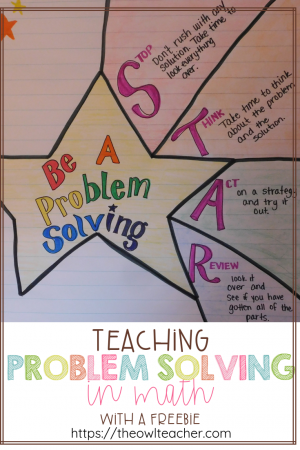
I put together a problem-solving unit that would focus a bit more on strategies and steps in hopes that that would create problem-solving stars.
The Problem Solving Strategies
First, I wanted to make sure my students all learned the different strategies to solve problems, such as guess-and-check, using visuals (draw a picture, act it out, and modeling it), working backward, and organizational methods (tables, charts, and lists). In the past, I had used worksheet pages that would introduce one and provide the students with plenty of problems practicing that one strategy. I did like that because students could focus more on practicing the strategy itself, but I also wanted students to know when to use it, too, so I made sure they had both to practice.
I provided students with plenty of practice of the strategies, such as in this guess-and-check game.
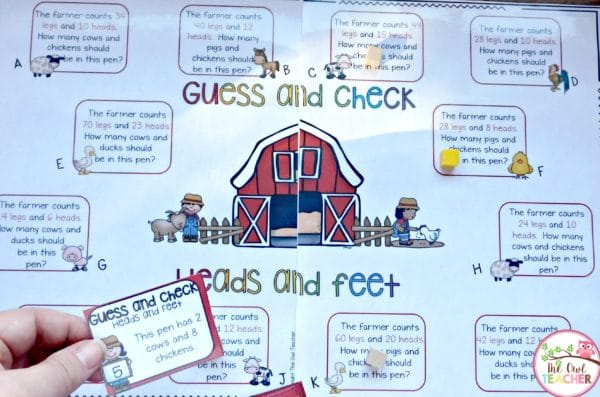
There’s also this visuals strategy wheel practice.
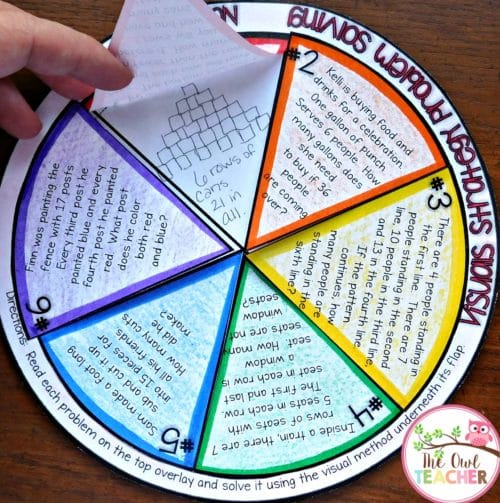
I also provided them with paper dolls and a variety of clothing to create an organized list to determine just how many outfits their “friend” would have.
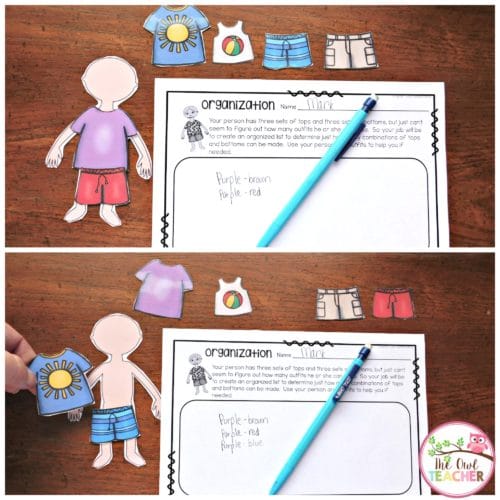
Then, as I said above, we practiced in a variety of ways to make sure we knew exactly when to use them. I really wanted to make sure they had this down!
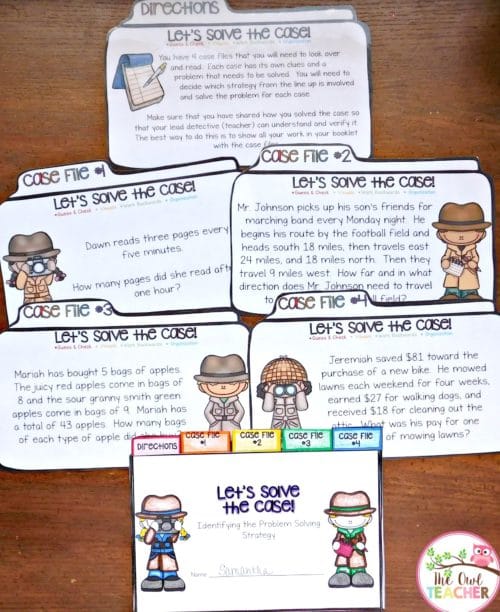
Anyway, after I knew they had down the various strategies and when to use them, then we went into the actual problem-solving steps.
The Problem Solving Steps
I wanted students to understand that when they see a story problem, it isn’t scary. Really, it’s just the equation written out in words in a real-life situation. Then, I provided them with the “keys to success.”
S tep 1 – Understand the Problem. To help students understand the problem, I provided them with sample problems, and together we did five important things:
- read the problem carefully
- restated the problem in our own words
- crossed out unimportant information
- circled any important information
- stated the goal or question to be solved
We did this over and over with example problems.
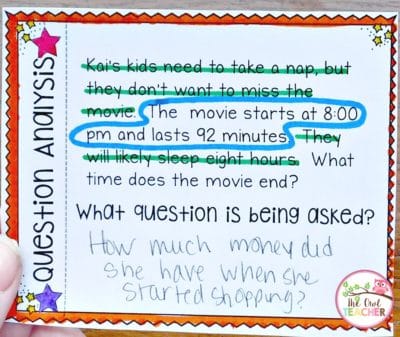
Once I felt the students had it down, we practiced it in a game of problem-solving relay. Students raced one another to see how quickly they could get down to the nitty-gritty of the word problems. We weren’t solving the problems – yet.
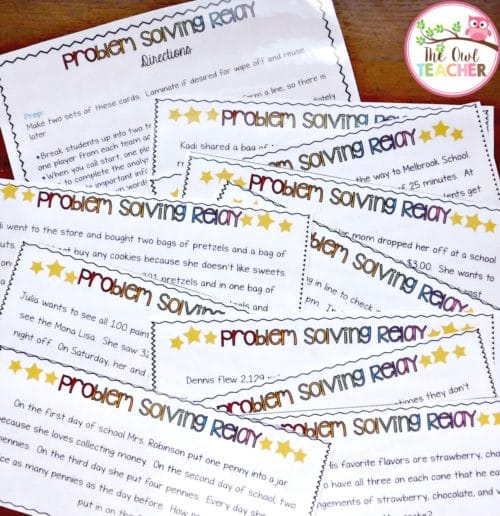
Then, we were on to Step 2 – Make a Plan . We talked about how this was where we were going to choose which strategy we were going to use. We also discussed how this was where we were going to figure out what operation to use. I taught the students Sheila Melton’s operation concept map.
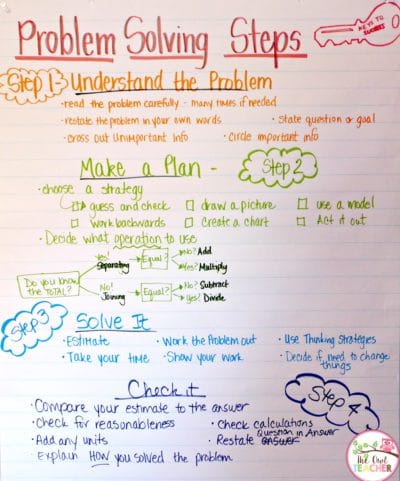
We talked about how if you know the total and know if it is equal or not, that will determine what operation you are doing. So, we took an example problem, such as:
Sheldon wants to make a cupcake for each of his 28 classmates. He can make 7 cupcakes with one box of cupcake mix. How many boxes will he need to buy?
We started off by asking ourselves, “Do we know the total?” We know there are a total of 28 classmates. So, yes, we are separating. Then, we ask, “Is it equal?” Yes, he wants to make a cupcake for EACH of his classmates. So, we are dividing: 28 divided by 7 = 4. He will need to buy 4 boxes. (I actually went ahead and solved it here – which is the next step, too.)
Step 3 – Solving the problem . We talked about how solving the problem involves the following:
- taking our time
- working the problem out
- showing all our work
- estimating the answer
- using thinking strategies
We talked specifically about thinking strategies. Just like in reading, there are thinking strategies in math. I wanted students to be aware that sometimes when we are working on a problem, a particular strategy may not be working, and we may need to switch strategies. We also discussed that sometimes we may need to rethink the problem, to think of related content, or to even start over. We discussed these thinking strategies:
- switch strategies or try a different one
- rethink the problem
- think of related content
- decide if you need to make changes
- check your work
- but most important…don’t give up!
To make sure they were getting in practice utilizing these thinking strategies, I gave each group chart paper with a letter from a fellow “student” (not a real student), and they had to give advice on how to help them solve their problem using the thinking strategies above.
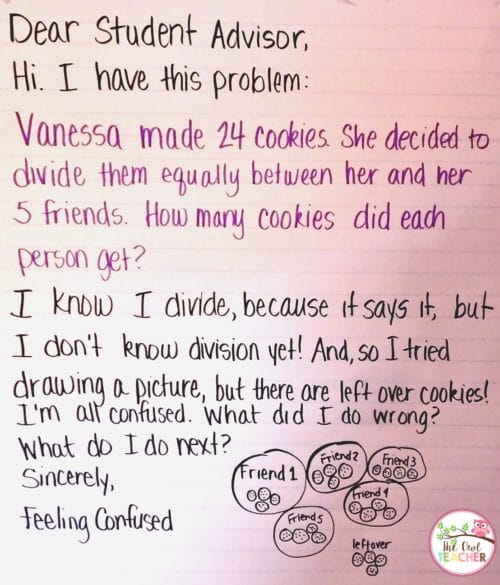
Finally, Step 4 – Check It. This is the step that students often miss. I wanted to emphasize just how important it is! I went over it with them, discussing that when they check their problems, they should always look for these things:
- compare your answer to your estimate
- check for reasonableness
- check your calculations
- add the units
- restate the question in the answer
- explain how you solved the problem
Then, I gave students practice cards. I provided them with example cards of “students” who had completed their assignments already, and I wanted them to be the teacher. They needed to check the work and make sure it was completed correctly. If it wasn’t, then they needed to tell what they missed and correct it.
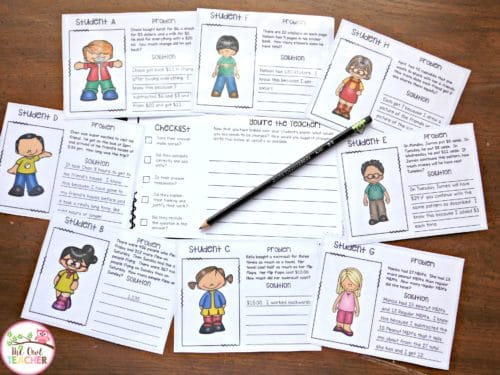
To demonstrate their understanding of the entire unit, we completed an adorable lap book (my first time ever putting together one or even creating one – I was surprised how well it turned out, actually). It was a great way to put everything we discussed in there.
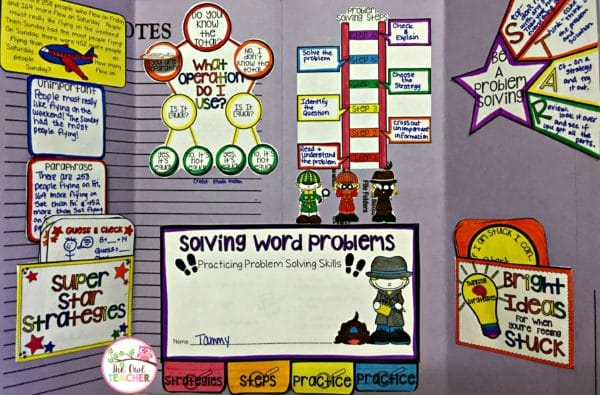
Once we were all done, students were officially Problem Solving S.T.A.R.S. I just reminded students frequently of this acronym.
Stop – Don’t rush with any solution; just take your time and look everything over.
Think – Take your time to think about the problem and solution.
Act – Act on a strategy and try it out.
Review – Look it over and see if you got all the parts.
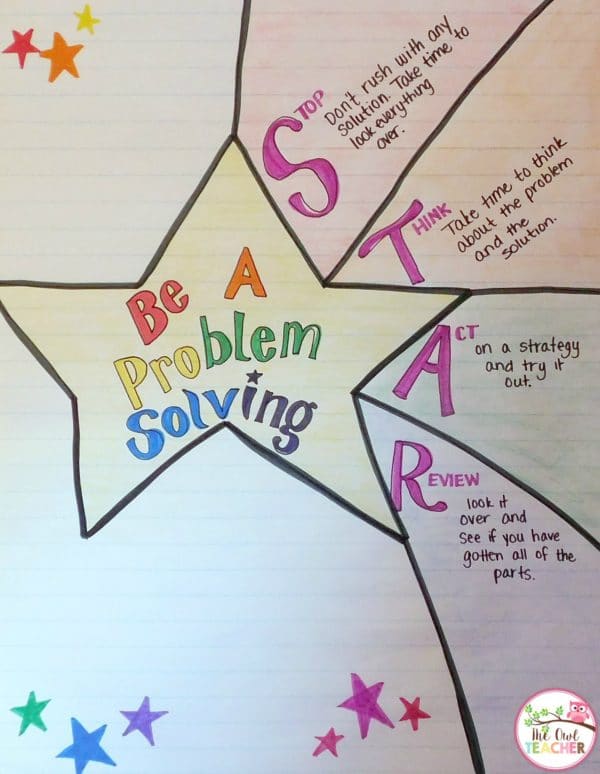
Wow, you are a true trooper sticking it out in this lengthy post! To sum up the majority of what I have written here, I have some problem-solving bookmarks FREE to help you remember and to help your students!
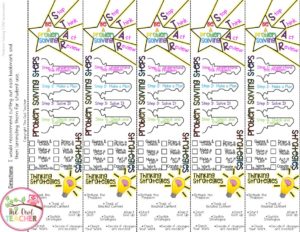
You can grab these problem-solving bookmarks for FREE by clicking here .
You can do any of these ideas without having to purchase anything. However, if you are looking to save some time and energy, then they are all found in my Math Workshop Problem Solving Unit . The unit is for grade three, but it may work for other grade levels. The practice problems are all for the early third-grade level.

- freebie , Math Workshop , Problem Solving

FIND IT NOW!
Check me out on tpt.

CHECK THESE OUT

Three Types of Rocks and Minerals with Rock Cycle Circle Book

Partitioning Shapes Equal Share Fractions Halves, Thirds, Fourths Math Puzzles
Want to save time?
COPYRIGHT © 2016-2024. The Owl Teacher | Privacy page | Disclosure Page | Shipping | Returns/Refunds
BOGO on EVERYTHING!
A password reset email has been sent to the email address on file for your account, but may take several minutes to show up in your inbox. Please wait at least 10 minutes before attempting another reset.
Email address *
Lost your password?
Lost your password? Please enter your email address. You will receive a link to create a new password via email.
Email address
Registering for this site allows you to access your order status and history. Just fill in the fields below, and we’ll get a new account set up for you in no time. We will only ask you for information necessary to make the purchase process faster and easier.
- Tweens & Teens
- GrowthMinded Login
Shopping cart
- No products in the cart.
items in the cart: 0
How to Teach Problem-Solving Skills to Children and Preteens
- By Ashley Cullins
Whether it’s a toy-related conflict, a tough math equation, or negative peer pressure, kids of ALL ages face problems and challenges on a daily basis.
As parents or teachers, we can’t always be there to solve every problem for our children. In fact, this isn’t our job. Our job is to TEACH our children how to solve problems by themselves . This way, they can become confident , independent, and successful individuals.
Instead of giving up or getting frustrated when they encounter a challenge, kids with problem-solving skills manage their emotions, think creatively, and persist until they find a solution. Naturally, these abilities go hand-in-hand with a growth mindset .
Before you continue, we thought you might like to download our FREE Your Words Matter Volume 2 Kit . With these 10 one-page parenting guides, you will know exactly how to speak to your child to help them stand up for themselves, be more confident, and develop a growth mindset.
So HOW do you teach problem-solving skills to kids?
Well, it depends on their age . As cognitive abilities and the size of the child’s challenges grow/evolve over time, so should your approach to teaching problem-solving skills.
Read on to learn key strategies for teaching problem-solving to kids, as well as some age-by-age ideas and activities.

3 General Strategies to Teach Problem-Solving at Any Age
1. model effective problem-solving .
When YOU encounter a challenge, do a “think-aloud” for the benefit of your child. MODEL how to apply the same problem-solving skills you’ve been working on together, giving the real-world examples that she can implement in her own life.
At the same time, show your child a willingness to make mistakes . Everyone encounters problems, and that’s okay. Sometimes the first solution you try won’t work, and that’s okay too!
When you model problem-solving, explain that there are some things that are out of our control. As we're solving a problem at hand we should focus on the things we CAN actually control.
You and your child can listen to Episode 35 of the Big Life Kids Podcast to learn about focusing on what you can control.
2. Ask for Advice
Ask your kids for advice when you have a problem. This teaches them that it’s common to make mistakes and face challenges. It also gives them the opportunity to practice problem-solving skills.
Plus, when you indicate that their ideas are valued , they’ll gain the confidence to attempt solving problems on their own.
3. Don’t Provide “The Answer”
As difficult as it may be, allow your child to struggle, sometimes fail , and ultimately LEARN from experiencing consequences.
Now, let’s take a look at some age-specific strategies and activities. The ages listed below are general guidelines, feel free to choose any strategies or activities that you feel will work for YOUR child.
Use Emotion Coaching
To step into a problem-solving mindset, young children need to first learn to manage their emotions . After all, it’s difficult for a small child to logically consider solutions to a problem if he’s mid-tantrum.
One way to accomplish this is by using the emotion coaching process outlined by John Gottman.
First, teach your kids that ALL emotions are acceptable. There are NO “bad” emotions. Even seemingly negative emotions like anger, sadness, and frustration can teach us valuable lessons. What matters is how we respond to these emotions.
Second, follow this process:
- Step One: Naming and validating emotions. When your child is upset, help her process the way she’s feeling. Say something like, “I understand that you’re upset because Jessica is playing with the toy you wanted.”
- Step Two: Processing emotions. Guide your child to her calming space. If she doesn't have one, it's a good idea to create one. Let her calm her body and process her emotions so she can problem-solve, learn, and grow.
- Step Three: Problem Solving. Brainstorm solutions with your child, doing more LISTENING than talking during the conversation. This allows your child to practice her problem-solving skills, and she’s more likely to actually implement the solutions she came up with herself.
Say, “Show Me the Hard Part”
When your child struggles or feels frustrated, try a technique suggested by mom and parenting blogger Lauren Tamm . Simply say, “Show me the hard part.”
This helps your child identify the ROOT of the problem, making it less intimidating and easier to solve.
Repeat back what your child says, “So you’re saying…”
Once you both understand the real problem, prompt your child to come up with solutions . “There must be some way you can fix that…” or “There must be something you can do…”
Now that your child has identified “the hard part,” she’ll likely be able to come up with a solution. If not, help her brainstorm some ideas. You may try asking the question, “If you DID know, what would you think?” and see what she comes up with.
Problem-Solve with Creative Play
Allow your child to choose activities and games based on her interests . Free play provides plenty of opportunities to navigate and creatively solve problems.
Children often learn best through play. Playing with items like blocks, simple puzzles, and dress-up clothes can teach your child the process of problem-solving.
Even while playing, your child thinks critically: Where does this puzzle piece fit? What does this do? I want to dress up as a queen. What should I wear? Where did I put my tiara? Is it under the couch?
Problem-Solve with Storybooks
Read age-appropriate stories featuring characters who experience problems, such as:
- Ladybug Girl and Bumblebee Boy by Jacky Davis: The story of two friends who want to play together but can’t find a game to agree on. After taking turns making suggestions, they arrive at a game they both want to play: Ladybug Girl and Bumblebee Boy.
- The Curious George Series by Margaret and H.E. Rey: A curious little monkey gets into and out of dilemmas, teaching kids to find solutions to problems of their own.
- Ira Sleeps Over by Bernard Waber: Ira’s thrilled to have a sleepover at his friend Reggie’s house. But there’s one problem: Should he or should he not bring his teddy bear? It may seem small, but this is the type of early social problem your child might relate to.
Connect these experiences to similar events in your child’s own life, and ASK your child HOW the characters in these stories could solve their problems. Encourage a variety of solutions, and discuss the possible outcomes of each.
This is a form of dialogue reading , or actively ENGAGING your child in the reading experience. Interacting with the text instead of passively listening can “turbocharge” the development of literacy skills such as comprehension in preschool-aged children.
By asking questions about the characters’ challenges, you can also give your child’s problem-solving abilities a boost.
You can even have your child role-play the problem and potential solutions to reinforce the lesson.
For book suggestions, refer to our Top 85 Growth Mindset Books for Children & Adults list.
Teach the Problem-Solving Steps
Come up with a simple problem-solving process for your child, one that you can consistently implement. For example, you might try the following five steps:
- Step 1: What am I feeling? Help your child understand what she’s feeling in the moment (frustration, anger, curiosity, disappointment, excitement, etc.) Noticing and naming emotions will diffuse their charge and give your child a chance to take a step back.
- Step 2: What’s the problem? Guide your child to identify the specific problem. In most cases, help her take responsibility for what happened rather than pointing fingers. For instance, instead of, “Joey got me in trouble at recess,” your child might say, “I got in trouble at recess for arguing with Joey.”
- Step 3: What are the solutions? Encourage your child to come up with as many solutions as possible. At this point, they don’t even need to be “good” solutions. They’re just brainstorming here, not yet evaluating the ideas they’ve generated.
- Step 4: What would happen if…? What would happen if your child attempted each of these solutions? Is the solution safe and fair? How will it make others feel? You can also try role-playing at this step. It’s important for your child to consider BOTH positive and negative consequences of her actions.
- Step 5: Which one will I try? Ask your child to pick one or more solutions to try. If the solution didn't work, discuss WHY and move on to another one. Encourage your child to keep trying until the problem is solved.
Consistently practice these steps so that they become second nature, and model solving problems of your own the same way. It's a good idea to reflect : What worked? What didn’t? What can you do differently next time?
Problem-Solve with Craft Materials
Crafting is another form of play that can teach kids to solve problems creatively.
Provide your child with markers, modeling clay, cardboard boxes, tape, paper, etc. They’ll come up with all sorts of interesting creations and inventive games with these simple materials.
These “open-ended toys” don’t have a “right way to play,” allowing your child to get creative and generate ideas independently .
Ask Open-Ended Questions
Asking open-ended questions improves a child’s ability to think critically and creatively, ultimately making them better problem-solvers. Examples of open-ended questions include:
- How could we work together to solve this?
- How did you work it out? or How do you know that?
- Tell me about what you built, made, or created.
- What do you think will happen next?
- What do you think would happen if…?
- What did you learn?
- What was easy? What was hard?
- What would you do differently next time?
Open-ended questions have no right answer and can’t be answered with a simple “Yes” or “No.”
You can ask open-ended questions even when your child isn’t currently solving a problem to help her practice her thinking skills, which will come in handy when she does have a problem to solve.
If you need some tips on how to encourage a growth mindset in your child, don't forget to download our FREE Your Words Matter Volume 2 Kit .

Break Down Problems into Chunks
This strategy is a more advanced version of “Show me the hard part.”
The bigger your child gets, the bigger her problems get too. When your child is facing a challenge that seems overwhelming or insurmountable, encourage her to break it into smaller, more manageable chunks.
For instance, let’s say your child has a poor grade in history class. Why is the grade so low? What are the causes of this problem?
As usual, LISTEN as your child brainstorms, asking open-ended questions to help if she gets stuck.
If the low grade is the result of missing assignments, perhaps your child can make a list of these assignments and tackle them one at a time. Or if tests are the issue, what’s causing your child to struggle on exams?
Perhaps she’s distracted by friends in the class, has trouble asking for help, and doesn’t spend enough time studying at home. Once you’ve identified these “chunks,” help your child tackle them one at a time until the problem is solved.
Show “ The Broken Escalator Video ”
Discuss the importance of embracing challenges and solving problems independently with the “broken escalator video.”
In the video, an escalator unexpectedly breaks. The people on the escalator are “stuck” and yelling for help. At this age, it’s likely that your child will find the video funny and immediately offer a solution: “Just walk! Get off the escalator!”
Tell your child that this is a simple example of how people sometimes act in difficult situations. Ask, “Why do you think they didn’t get off the escalator?” (they didn’t know how, they were waiting for help, etc.)
Sometimes, your child might feel “stuck” when facing problems. They may stop and ask for help before even attempting to find a solution. Encourage your child to embrace challenges and work through problems instead.
Problem-Solve with Prompts
Provide your child or a group of children with materials such as straws, cotton balls, yarn, clothespins, tape, paper clips, sticky notes, Popsicle sticks, etc.
With just these materials, challenge your kids to solve unusual problems like:
- Make a leprechaun trap
- Create a jump ramp for cars
- Design your own game with rules
- Make a device for two people to communicate with one another
This is a fun way to practice critical thinking and creative problem-solving. Most likely, it will take multiple attempts to find a solution that works, which can apply to just about any aspect of life.
Make Them Work for It
When your child asks for a new toy, technology, or clothes, have her make a plan to obtain the desired item herself. Not only will your child have to brainstorm and evaluate solutions, but she’ll also gain confidence .
Ask your child HOW she can earn the money for the item that she wants, and encourage her as she works toward her goal .
Put It on Paper
Have your child write out their problems on paper and brainstorm some potential solutions.
But now, she takes this process a step further: After attempting each solution, which succeeded? Which were unsuccessful? Why ?
This helps your child reflect on various outcomes, learning what works and what doesn’t. The lessons she learns here will be useful when she encounters similar problems in the future.
Play Chess Together
Learning to play chess is a great way for kids to learn problem-solving AND build their brains at the same time. It requires players to use critical thinking, creativity, analysis of the board, recognize patterns, and more. There are online versions of the game, books on how to play, videos, and other resources. Don’t know how to play? Learn with your teen to connect and problem solve together!
Have Them Learn To Code
Our teens and tweens are already tech-savvy and can use their skills to solve problems by learning to code. Coding promotes creativity, logic, planning, and persistence . There are many great tools and online or in-person programs that can boost your child’s coding skills.
Encourage to Start a Meaningful Project
This project has to be meaningful to your teen, for example starting a YouTube channel. Your teen will practice problem-solving skills as they’re figuring out how to grow their audience, how to have their videos discovered, and much more.
In the Big Life Journal - Teen Edition , there’s a section that guides them through planning their YouTube channel and beginning the problem-solving process.
Apply the SODAS Method
Looking for a game plan that your teen can employ when faced with a problem? The SODAS method can be used for big or small problems. Just remember this simple acronym and follow these ideas:
- D isadvantages
- A dvantages
Encourage to Join Problem-Solving Groups
Does your teen enjoy solving problems in a team? Have them join a group or club that helps them hone their skills in a variety of settings--from science and robotics to debating and international affairs. Some examples of groups include:
- Odyssey of the Mind
- Debate team
- Science Olympiad
Looking for additional resources? The Bestseller’s Bundle includes our three most popular printable kits packed with science-based activities, guides, and crafts for children. Our Growth Mindset Kit, Resilience Kit, and Challenges Kit work together as a comprehensive system designed specifically for children ages 5-11.
- Share this post:
25 thoughts on “ How to Teach Problem-Solving Skills to Children and Preteens ”
I love, love, love the point about emotional coaching. It’s so important to identify how children are feeling about a problem and then approach the solutions accordingly.
Thank you for putting this together. I wrote an article on problem-solving specifically from the point of view of developing a STEM aptitude in kids, if you like to check it out – https://kidpillar.com/how-to-teach-problem-solving-to-your-kids-5-8-years/
I feel that these techniques will work for my kid.. Worthy.. Thank you
I love you guys

Leave a Reply
Your email address will not be published. Required fields are marked *
- New Printable
- Guide Printable
FOLLOW US ON INSTAGRAM
Join Pilot Waitlist

Home » Blog » Lesson Plans » From Problems to Solutions: Teaching Problem-Solving Skills to Elementary Students

From Problems to Solutions: Teaching Problem-Solving Skills to Elementary Students
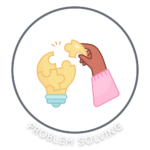
Problem-solving skills are essential — they empower students to navigate the challenges they encounter throughout their academic and personal lives. While it may seem like a complex concept for elementary students, fostering these skills from a young age is crucial for their cognitive development and future success. In this blog post, we’ll explore the significance of teaching problem solving to elementary students and provide a comprehensive lesson plan that educators can implement in their classrooms.
Understanding the Role of Problem-Solving Skills
Problem-solving skills include critical thinking, creativity, decision-making, and perseverance. These skills enable students to analyze situations, identify solutions, and implement effective strategies to overcome obstacles. By nurturing these skills early on, we as educators lay the foundation for students to become resilient, resourceful, and adaptable individuals.
Teaching problem solving to elementary students is vital for several reasons:
- Cognitive Development: Engaging in problem-solving activities stimulates children’s cognitive abilities, enhancing their logical reasoning and analytical thinking skills.
- Life Skills: Problem-solving skills are not only applicable in academic settings but also in everyday life. Teaching these skills equips students with the tools they need to tackle challenges in various contexts.
- Confidence Building: Successfully solving problems boosts students’ confidence and self-esteem.
- Collaboration: Problem-solving often involves working collaboratively with peers, fostering communication, teamwork, and empathy among students.
Lesson Plan for Elementary Students
Warm-up activity (10 minutes).
To kickstart the lesson, engage students in a fun and interactive warm-up activity to stimulate their critical thinking skills. For example, present them with riddles, puzzles, or brain teasers that encourage them to think creatively and analytically:
“Sarah’s mother has three children. The first child is named April, the second child is named May. What is the name of the third child?”
This brain teaser encourages elementary students to think creatively and analytically. While the names “April” and “May” might lead students to think of the third child’s name as “June,” the correct answer is “Sarah,” as stated in the beginning of the riddle. This puzzle challenges students to carefully read and consider all the information provided before reaching a conclusion.
Introduction (15 minutes)
Introduce students to the concept of problem-solving and its importance in their daily lives. Discuss the steps, such as identifying the problem, brainstorming possible solutions, evaluating alternatives, and implementing a plan. Use age-appropriate examples and real-life scenarios. For example: Imagine you’re at recess, and you and your friends want to play a game, but you can’t decide which one to choose. This is where problem-solving skills come into play. You need to think critically about each game option, considering factors like the number of players, the space available, and everyone’s preferences. Then, you use your creativity to come up with new ideas or compromises if there’s a disagreement. Next, you make decisions based on what’s best for the group, taking turns and listening to each other’s opinions. Finally, you persevere, even if the game doesn’t go exactly as planned, adapting your strategies and finding solutions to any challenges that arise. This scenario illustrates how problem-solving skills can help you and your friends have a fun and enjoyable recess.
Problem Solving Scale Slider Activity (25 minutes)
For the practical part of the lesson, incorporate the Problem Solving Scale Slider activity (see below). This activity provides an interactive scale slider to explore different-sized problems and how they might make students feel.
Instructions for the Activity:
- Divide the students into small groups and provide each group with a set of problem-solving scenarios.
- Instruct the groups to read the scenarios.
- Using the Problem Solving Scale Slider, have the groups find the solutions for the scenarios.
- Encourage students to engage in peer discussions.
- Conclusion and reflection.
Unlock the Problem Solving Scale Slider by signing up for your free trial – no credit card required!

Get more problem solving materials here!
Instant access to thousands of no-prep social skills activities, over 1000+ video lessons, and engaging games designed to enhance learning and development.
Teaching problem-solving to elementary students is an enriching journey that provides them with essential skills for success. By creating a nurturing learning atmosphere and offering practical experiences, we can foster confidence in students as problem solvers. Through structured lessons and interactive activities such as the Problem Solving Scale Slider, you can cultivate the problem-solving skills of young learners, paving the way for academic accomplishments and enduring resilience.
Sample Video
Students learn best from watching real students their own age model skills. Try out this sample video lesson. We offer our entire Social-Emotional Learning platform free for 14 days here !
Related Blog Posts:
Teaching Problem-Solving Skills: Identifying Big & Small Problems
Teaching Conflict Resolution and Problem Solving Skills to Special Education Students
Teaching Problem-Solving Skills with the Solve It Game
Looking for Free Social Skills Samples? Click here!

FREE MATERIALS
Better doesn’t have to be harder, social skills lessons students actually enjoy.
Be the best educator you can be with no extra prep time needed. Sign up to get access to free samples from the best Social Skills and Social-Emotional educational platform.
Get Started Instantly for Free
Complete guided therapy.
The subscription associated with this email has been cancelled and is no longer active. To reactivate your subscription, please log in.
If you would like to make changes to your account, please log in using the button below and navigate to the settings page. If you’ve forgotten your password, you can reset it using the button below.
Unfortunately it looks like we’re not able to create your subscription at this time. Please contact support to have the issue resolved. We apologize for the inconvenience. Error: Web signup - customer email already exists
Welcome back! The subscription associated with this email was previously cancelled, but don’t fret! We make it easy to reactivate your subscription and pick up right where you left off. Note that subscription reactivations aren't eligible for free trials, but your purchase is protected by a 30 day money back guarantee. Let us know anytime within 30 days if you aren’t satisfied and we'll send you a full refund, no questions asked. Please press ‘Continue’ to enter your payment details and reactivate your subscription
Notice About Our SEL Curriculum
Our SEL Curriculum is currently in a soft product launch stage and is only available by Site License. A Site License is currently defined as a school-building minimum or a minimum cost of $3,000 for the first year of use. Individual SEL Curriculum licenses are not currently available based on the current version of this product.
By clicking continue below, you understand that access to our SEL curriculum is currently limited to the terms above.
High Impact Tutoring Built By Math Experts
Personalized standards-aligned one-on-one math tutoring for schools and districts
Free ready-to-use math resources
Hundreds of free math resources created by experienced math teachers to save time, build engagement and accelerate growth

20 Effective Math Strategies To Approach Problem-Solving
Katie Keeton
Math strategies for problem-solving help students use a range of approaches to solve many different types of problems. It involves identifying the problem and carrying out a plan of action to find the answer to mathematical problems.
Problem-solving skills are essential to math in the general classroom and real-life. They require logical reasoning and critical thinking skills. Students must be equipped with strategies to help them find solutions to problems.
This article explores mathematical problem solving strategies, logical reasoning and critical thinking skills to help learners with solving math word problems independently in real-life situations.
What are problem-solving strategies?
Problem-solving strategies in math are methods students can use to figure out solutions to math problems. Some problem-solving strategies:
- Draw a model
- Use different approaches
- Check the inverse to make sure the answer is correct
Students need to have a toolkit of math problem-solving strategies at their disposal to provide different ways to approach math problems. This makes it easier to find solutions and understand math better.
Strategies can help guide students to the solution when it is difficult ot know when to start.

The ultimate guide to problem solving techniques
Download these ready-to-go problem solving techniques that every student should know. Includes printable tasks for students including challenges, short explanations for teachers with questioning prompts.
20 Math Strategies For Problem-Solving
Different problem-solving math strategies are required for different parts of the problem. It is unlikely that students will use the same strategy to understand and solve the problem.
Here are 20 strategies to help students develop their problem-solving skills.
Strategies to understand the problem
Strategies that help students understand the problem before solving it helps ensure they understand:
- The context
- What the key information is
- How to form a plan to solve it
Following these steps leads students to the correct solution and makes the math word problem easier .
Here are five strategies to help students understand the content of the problem and identify key information.
1. Read the problem aloud
Read a word problem aloud to help understand it. Hearing the words engages auditory processing. This can make it easier to process and comprehend the context of the situation.
2. Highlight keywords
When keywords are highlighted in a word problem, it helps the student focus on the essential information needed to solve it. Some important keywords help determine which operation is needed. For example, if the word problem asks how many are left, the problem likely requires subtraction. Ensure students highlight the keywords carefully and do not highlight every number or keyword. There is likely irrelevant information in the word problem.
3. Summarize the information
Read the problem aloud, highlight the key information and then summarize the information. Students can do this in their heads or write down a quick summary. Summaries should include only the important information and be in simple terms that help contextualize the problem.
4. Determine the unknown
A common problem that students have when solving a word problem is misunderstanding what they are solving. Determine what the unknown information is before finding the answer. Often, a word problem contains a question where you can find the unknown information you need to solve. For example, in the question ‘How many apples are left?’ students need to find the number of apples left over.
5. Make a plan
Once students understand the context of the word problem, have dentified the important information and determined the unknown, they can make a plan to solve it. The plan will depend on the type of problem. Some problems involve more than one step to solve them as some require more than one answer. Encourage students to make a list of each step they need to take to solve the problem before getting started.
Strategies for solving the problem
1. draw a model or diagram.
Students may find it useful to draw a model, picture, diagram, or other visual aid to help with the problem solving process. It can help to visualize the problem to understand the relationships between the numbers in the problem. In turn, this helps students see the solution.

Similarly, you could draw a model to represent the objects in the problem:

2. Act it out
This particular strategy is applicable at any grade level but is especially helpful in math investigation in elementary school . It involves a physical demonstration or students acting out the problem using movements, concrete resources and math manipulatives . When students act out a problem, they can visualize and contectualize the word problem in another way and secure an understanding of the math concepts. The examples below show how 1st-grade students could “act out” an addition and subtraction problem:
3. Work backwards
Working backwards is a popular problem-solving strategy. It involves starting with a possible solution and deciding what steps to take to arrive at that solution. This strategy can be particularly helpful when students solve math word problems involving multiple steps. They can start at the end and think carefully about each step taken as opposed to jumping to the end of the problem and missing steps in between.
For example,

To solve this problem working backwards, start with the final condition, which is Sam’s grandmother’s age (71) and work backwards to find Sam’s age. Subtract 20 from the grandmother’s age, which is 71. Then, divide the result by 3 to get Sam’s age. 71 – 20 = 51 51 ÷ 3 = 17 Sam is 17 years old.
4. Write a number sentence
When faced with a word problem, encourage students to write a number sentence based on the information. This helps translate the information in the word problem into a math equation or expression, which is more easily solved. It is important to fully understand the context of the word problem and what students need to solve before writing an equation to represent it.
5. Use a formula
Specific formulas help solve many math problems. For example, if a problem asks students to find the area of a rug, they would use the area formula (area = length × width) to solve. Make sure students know the important mathematical formulas they will need in tests and real-life. It can help to display these around the classroom or, for those who need more support, on students’ desks.
Strategies for checking the solution
Once the problem is solved using an appropriate strategy, it is equally important to check the solution to ensure it is correct and makes sense.
There are many strategies to check the solution. The strategy for a specific problem is dependent on the problem type and math content involved.
Here are five strategies to help students check their solutions.
1. Use the Inverse Operation
For simpler problems, a quick and easy problem solving strategy is to use the inverse operation. For example, if the operation to solve a word problem is 56 ÷ 8 = 7 students can check the answer is correct by multiplying 8 × 7. As good practice, encourage students to use the inverse operation routinely to check their work.
2. Estimate to check for reasonableness
Once students reach an answer, they can use estimation or rounding to see if the answer is reasonable. Round each number in the equation to a number that’s close and easy to work with, usually a multiple of ten. For example, if the question was 216 ÷ 18 and the quotient was 12, students might round 216 to 200 and round 18 to 20. Then use mental math to solve 200 ÷ 20, which is 10. When the estimate is clear the two numbers are close. This means your answer is reasonable.
3. Plug-In Method
This method is particularly useful for algebraic equations. Specifically when working with variables. To use the plug-in method, students solve the problem as asked and arrive at an answer. They can then plug the answer into the original equation to see if it works. If it does, the answer is correct.

If students use the equation 20m+80=300 to solve this problem and find that m = 11, they can plug that value back into the equation to see if it is correct. 20m + 80 = 300 20 (11) + 80 = 300 220 + 80 = 300 300 = 300 ✓
4. Peer Review
Peer review is a great tool to use at any grade level as it promotes critical thinking and collaboration between students. The reviewers can look at the problem from a different view as they check to see if the problem was solved correctly. Problem solvers receive immediate feedback and the opportunity to discuss their thinking with their peers. This strategy is effective with mixed-ability partners or similar-ability partners. In mixed-ability groups, the partner with stronger skills provides guidance and support to the partner with weaker skills, while reinforcing their own understanding of the content and communication skills. If partners have comparable ability levels and problem-solving skills, they may find that they approach problems differently or have unique insights to offer each other about the problem-solving process.
5. Use a Calculator
A calculator can be introduced at any grade level but may be best for older students who already have a foundational understanding of basic math operations. Provide students with a calculator to allow them to check their solutions independently, accurately, and quickly. Since calculators are so readily available on smartphones and tablets, they allow students to develop practical skills that apply to real-world situations.
Step-by-step problem-solving processes for your classroom
In his book, How to Solve It , published in 1945, mathematician George Polya introduced a 4-step process to solve problems.
Polya’s 4 steps include:
- Understand the problem
- Devise a plan
- Carry out the plan
Today, in the style of George Polya, many problem-solving strategies use various acronyms and steps to help students recall.
Many teachers create posters and anchor charts of their chosen process to display in their classrooms. They can be implemented in any elementary, middle school or high school classroom.
Here are 5 problem-solving strategies to introduce to students and use in the classroom.

How Third Space Learning improves problem-solving
Resources .
Third Space Learning offers a free resource library is filled with hundreds of high-quality resources. A team of experienced math experts carefully created each resource to develop students mental arithmetic, problem solving and critical thinking.
Explore the range of problem solving resources for 2nd to 8th grade students.
One-on-one tutoring
Third Space Learning offers one-on-one math tutoring to help students improve their math skills. Highly qualified tutors deliver high-quality lessons aligned to state standards.
Former teachers and math experts write all of Third Space Learning’s tutoring lessons. Expertly designed lessons follow a “my turn, follow me, your turn” pedagogy to help students move from guided instruction and problem-solving to independent practice.
Throughout each lesson, tutors ask higher-level thinking questions to promote critical thinking and ensure students are developing a deep understanding of the content and problem-solving skills.

Problem-solving
Educators can use many different strategies to teach problem-solving and help students develop and carry out a plan when solving math problems. Incorporate these math strategies into any math program and use them with a variety of math concepts, from whole numbers and fractions to algebra.
Teaching students how to choose and implement problem-solving strategies helps them develop mathematical reasoning skills and critical thinking they can apply to real-life problem-solving.
READ MORE : 8 Common Core math examples
There are many different strategies for problem-solving; Here are 5 problem-solving strategies: • draw a model • act it out • work backwards • write a number sentence • use a formula
Here are 10 strategies of problem-solving: • Read the problem aloud • Highlight keywords • Summarize the information • Determine the unknown • Make a plan • Draw a model • Act it out • Work backwards • Write a number sentence • Use a formula
1. Understand the problem 2. Devise a plan 3. Carry out the plan 4. Look back
Some strategies you can use to solve challenging math problems are: breaking the problem into smaller parts, using diagrams or models, applying logical reasoning, and trying different approaches.
Related articles

Why Student Centered Learning Is Important: A Guide For Educators

13 Effective Learning Strategies: A Guide to Using them in your Math Classroom

Differentiated Instruction: 9 Differentiated Curriculum And Instruction Strategies For Teachers

5 Math Mastery Strategies To Incorporate Into Your 4th and 5th Grade Classrooms
Ultimate Guide to Metacognition [FREE]
Looking for a summary on metacognition in relation to math teaching and learning?
Check out this guide featuring practical examples, tips and strategies to successfully embed metacognition across your school to accelerate math growth.
Privacy Overview
- Prodigy Math
- Prodigy English
- Is a Premium Membership Worth It?
- Promote a Growth Mindset
- Help Your Child Who's Struggling with Math
- Parent's Guide to Prodigy
- Assessments
- Math Curriculum Coverage
- English Curriculum Coverage
- Game Portal
How to Teach Elementary Math as Effectively as Possible

Written by Maria Kampen
Spark a love for math! 💥
"This was the first program where I saw kids going home and answering 100 questions..." – Zach Mendence, Teacher
- Teaching Strategies
10 Strategies for effectively teaching math to elementary schoolers
How to foster student success as an elementary school math teacher, the problem with elementary mathematics instruction, getting your students excited about math education.
A good educator makes a difference in how students learn and how they feel about their learning.
When you teach elementary math , you have a tremendous opportunity to not only teach your students foundational concepts they’ll use throughout their schooling, but to instill a love of math from a young age.
Keep reading for the best ways to create effective and engaging math lessons in your elementary classroom!
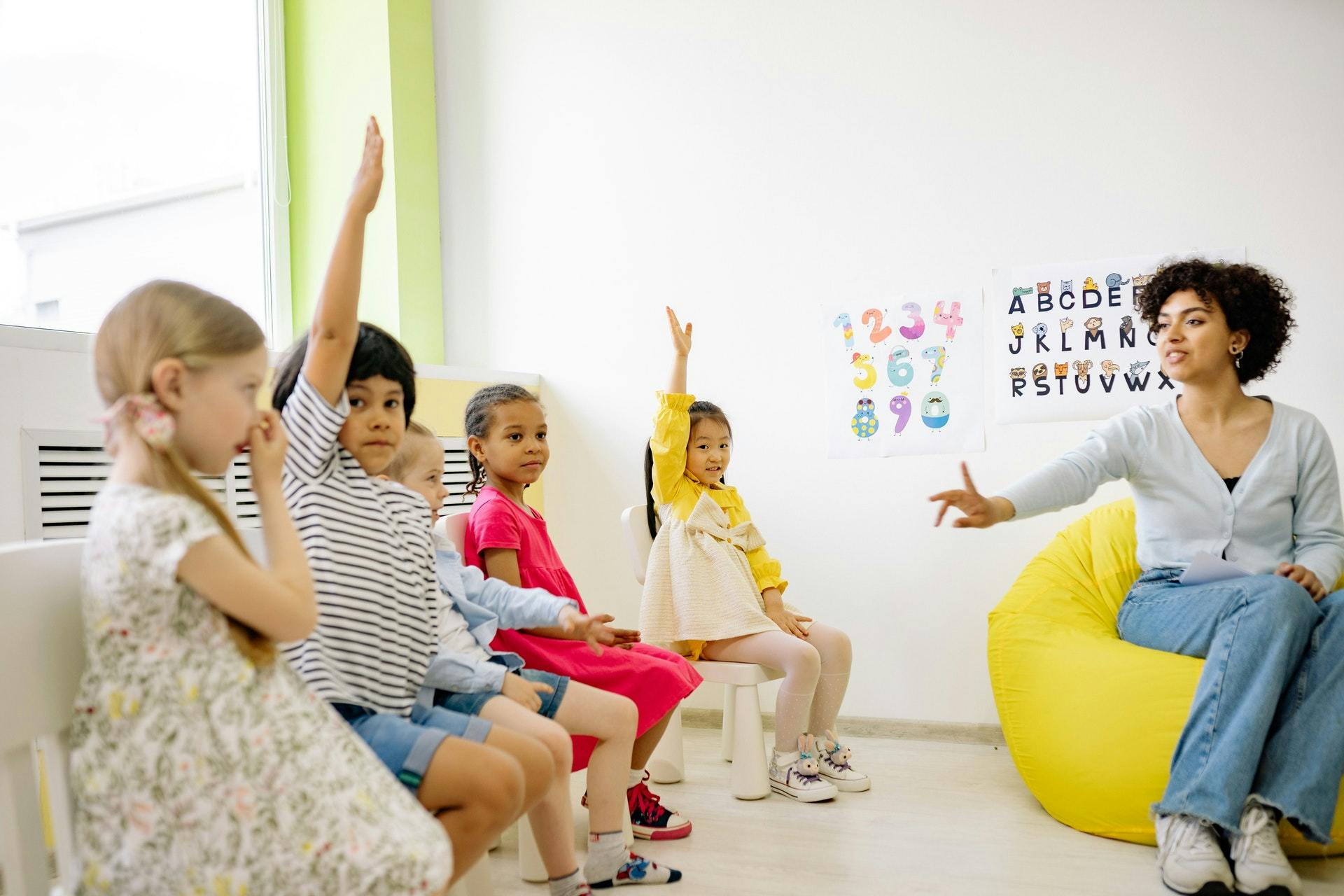
Your students probably have varying levels of interest and ability when it comes to math class. In order to meet their different needs, you need to be flexible and understand how they learn best.
Use these activities to help your young students develop problem-solving skills, understand abstract concepts and encourage math talk in your classroom.
1. Use hands-on learning methods
Put down the worksheets and step away from the chalkboard — these hands-on teaching methods are designed to make sure every student is actively participating in your lesson!
Some of our favorite kinesthetic activities include:
- Geoboards for learning about shapes and doing fun geometry activities
- A play store where students can practice their money skills and buy small items
- Play-based learning activities like number blocks, playdough and other math stations
- Dice rolls , where students use the numbers they roll to learn about place value and create a number that’s greater than, less than or equal to the one on the board.
No matter what you’re teaching, there’s a hands-on learning activity for it. Try incorporating base ten blocks, LEGO or even playdough to help students understand abstract mathematical concepts and develop number sense.
2. Incorporate visuals
For some students, seeing is believing. Visual representations of new ideas can help them develop deep understanding and even use a different part of their brain!
Anchor charts around the classroom can help students understand the basics of a new unit, while word walls can help build vocabulary skills.
Practice different ways of showing numbers with a ten frame, pictures, or number lines. Explain concepts like multiplication and long division with buttons, blocks or other small items.
3. Integrate math games into math lessons
Every kid loves to play, so harness that power with math games! Classroom games are a great way to engage students and give them an active learning experience.
Some of our favorite math games include:
- 101 and Out — Students roll two dice, then multiply or add the numbers to get as close to 101 without going over. Students can get competitive and practice their strategic thinking.
- War — This classic card game is a great way to practice multiplication, exponent rules , subtraction or addition. Players draw two cards and combine them to beat their opponent’s total.
- Math hopscotch — Draw a hopscotch or calculator on the ground with chalk or masking tape. Challenge students to make equations that equal a given number by hopping on the right squares.
For more classroom fun, incorporate digital game-based learning tools like Prodigy Math into your classroom. Inspired by the video games and fantasy adventures your students already love, Prodigy turns your math class into an adventure filled with epic quests, exciting rewards and more ways to love learning math.
Plus, your free teacher account gives you access to tools that help you:
- Differentiate for every learner
- Align in-game questions with your lesson plan
- Track student progress and spot learning gaps
4. Connect math concepts to everyday life
Are we ever going to use this in real life?
Introduce students to all the ways math is applicable to real life with:
- Word problems that reflect your students’ unique lives and interests
- Service learning projects, where community service connects with classroom learning
- Project-based learning , where students can follow a particular interest and problem to its conclusion
Websites like Get the Math also give students more ways to see math in action and experiment for themselves.
5. Allow students to explain their reasoning

When students have a chance to explain the why behind their solution, they’re thinking critically. Instead of just plugging in a formula or answering with a few words, encourage students to think deeper about math problems and understand the theory behind them.
Use number talks in your classroom to help students solve problems and explain how they did it. Record different strategies and show students there’s more than one way to reach the answer!
Math journaling can also give students space to write down how they solved word problems. They’ll be able to ask you questions and define relevant vocabulary for all-around understanding!
6. Give frequent feedback and direction
Student learning is a journey, and you’re the guide.
As students learn and grow, feedback on what they’re doing right and where they can improve is critical for helping them develop a growth mindset .
Aside from traditional parent-teacher conferences , classroom direction and feedback can come through:
- Well-crafted rubrics that clearly define the goals and expectations of a project
- Student-led conferences , where students give input on their work and discuss goals with parents and teachers
- Personalized learning strategies to help students address their own learning needs before they become larger issues
7. Reward progress

Mastering multiplication or successfully tackling time-telling is a big deal for kids — so why not take the chance to celebrate a little?
At the end of a big test, unit or project, take a moment to celebrate everything students achieved. Give space for students to share their final products with the class.
Student-led celebrations can help you incorporate math and other skills into your celebration, too! Have students decide on a theme, budget (if any), decorations and volunteers to add a little extra learning to the fun.
Want to celebrate student achievement in a fun, engaging way? Here’s how to use Prodigy for engagement and rewards.
8. Personalize lessons
Personalized learning tailors lessons to every student’s unique needs and abilities. It gives students control over their own learning and can help differentiate what students practice.
A Middletown, NY school district implemented a personalized learning program that asked students to help set their own goals around the classroom. The school district saw a 67% increase in math achievement over four years.
Some common personalized learning strategies include:
- Inquiry-based learning , where students investigate an open-ended question to develop a conclusion.
- Edtech tools like Prodigy Math , an adaptive math platform that tailors learning to each student’s skill gaps and strengths.
- Personalized learning playlists that allow students to rotate through different activities. Each activity has a certain point value, so students must pass learning checkpoints and reach a total points score to demonstrate mastery.
Above all, allow students to have a say in their own learning experience and give them multiple opportunities to demonstrate their knowledge.
9. Encourage teamwork

When students work together, they also learn from each other. There are lots of strategies to help make teamwork in your classroom easy, including:
- Cooperative learning — Each student plays a different role in a group project.
- Discussion-based learning — Students discuss a problem or the answer to a question.
- Collaborative learning — Students work on a common task and complete the same actions to boost group performance.
Be sure to model open-minded and respectful listening skills, and encourage all students to participate fully.
10. Allow lessons to build on one another
In math class, concepts don’t exist independently of each other — they tend to stack up. Mastery learning can help each student to build on previous knowledge and set them up for long-term success.
Did you know that the average student in a mastery learning classroom achieves the same level as the top 15% of students in a classroom not using mastery learning? 90% of mastery learning studies have seen positive results, showing that students can achieve more when they learn at their own pace.
Use pre-teaching for maximum impact and effectiveness, or cover relevant background knowledge as it comes up. When students are equipped with everything they need to know, they’re more likely to have a positive attitude towards math!
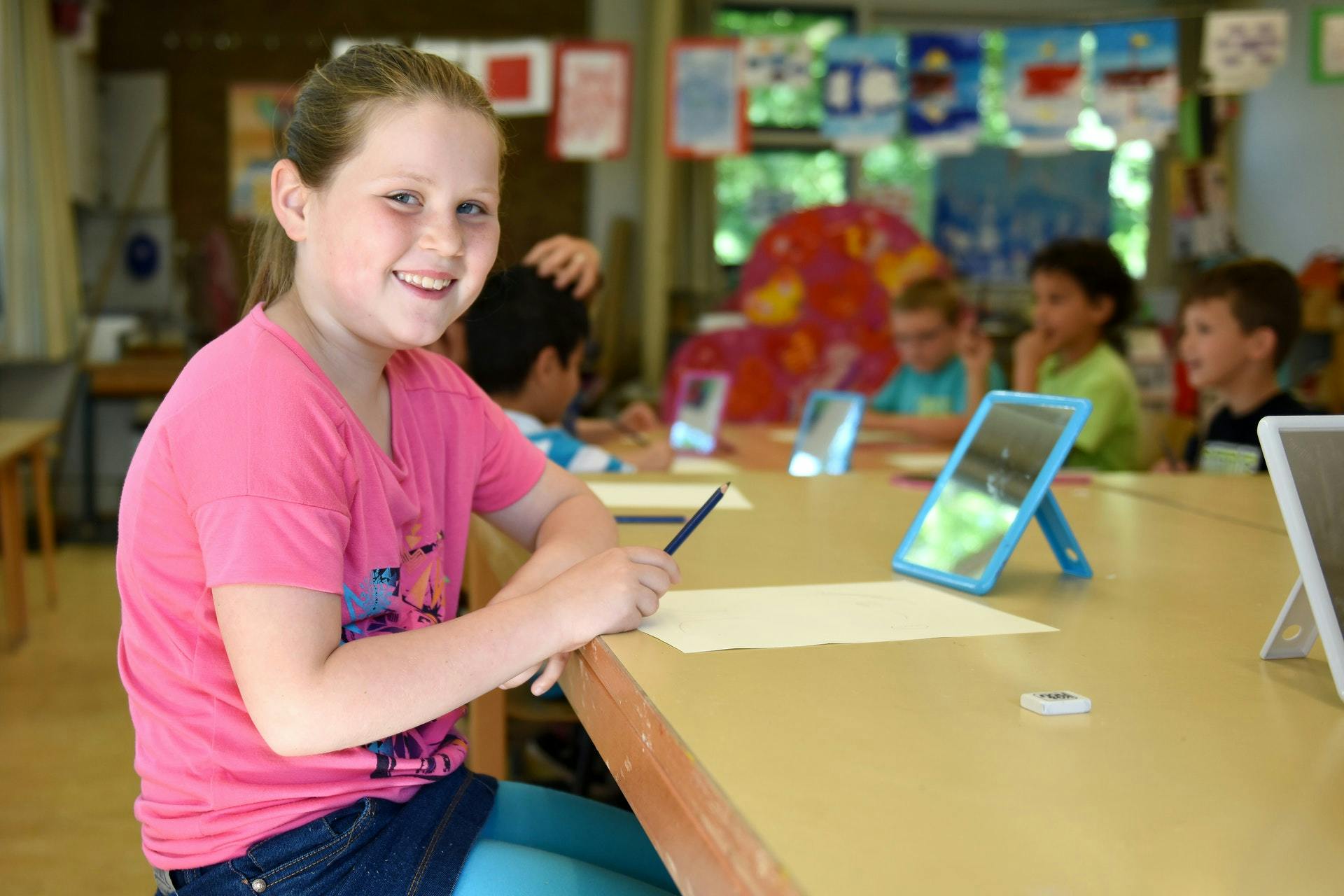
As an elementary teacher, you want all your students to succeed and build a positive attitude towards math.
While every student is different, here are some ways you can foster math confidence and student achievement in your classroom:
Understand different learning styles
Verbal, auditory, kinesthetic, social — every student is unique and learns in a different way. Whether it’s the materials you use or the study strategies you teach students, be sure to find teaching strategies that address different learning styles.
To understand how students learn best, send out a quick survey, ask parents during parent-teacher conferences or do some classroom observation. A mix of individual, paired and group work can also help every student succeed in their own way.
Encourage mathematical thinking and problem solving
It’s easy for students to get caught up in memorizing facts and learning formulas. And that’s important! But as students learn, make sure to explain the why behind math operations, not just the what .
Build in-class time for talking through problems, and seek out ways to apply what you’re teaching to everyday life.
Incentivize effort
Like all of us, students sometimes need a little motivation to keep going when things are hard. Encourage students to try their best with rewards like:
- Sitting with a friend
- Quick mid-class brain breaks
- Teacher’s helper jobs for a day
- Fun activities for early finishers
- A few extra minutes of play time
- The chance to pick a class game
Small rewards can help students stay focused and on task. Plus, they’re a great way to keep the math classroom fun!
Celebrate wins
Once you’ve encouraged students to try their best, don’t forget to celebrate their achievements.
Rewards for good behavior or exceptional achievement keep students motivated to learn. Recognize their hard work and:
- Praise students sincerely and often
- Have students recognize what they like best about their peers
- Share good news with parents at conferences or in a quick email
- Give end-of-year awards for each student based on their successes and personalities
Course correct regularly
Not everything you try is going to work right away. Maybe students don’t take to a certain math instruction technique or prefer to show their math skills in a different way.
Challenge yourself to take an honest look at your teaching strategies and whether or not they’re working. If you’re stuck, ask a trusted colleague for feedback.
It’s no secret that elementary math curriculums often aren’t as effective as possible. As a teacher, you’re sometimes left to your own devices when it comes to helping students understand mathematical ideas like addition, subtraction, multiplication, division or decimals for the first time.
Common Core and other state standards attempt to correct for a surface-level understanding of math concepts, but they’re not always successful. As a teacher, the best way to ensure long-term success is to promote conceptual understanding as much as content knowledge and use a mixture of techniques in your instruction.

There are lots of resources and techniques to help you make math fun for every student, no matter how they feel about math class.
As you teach, keep trying new strategies and ways for students to learn. Adjust as necessary, model a positive attitude and soon you’ll start to see what your students can accomplish!
Prodigy Math is an adaptive, game-based learning platform that turns math practice into an epic adventure. Students explore new worlds, complete quests and play with friends — all while answering standards-aligned math questions. As they play, use your free teacher tools to send Assessments and differentiate content for every learner.
The Edvocate
- Lynch Educational Consulting
- Dr. Lynch’s Personal Website
- Write For Us
- The Tech Edvocate Product Guide
- The Edvocate Podcast
- Terms and Conditions
- Privacy Policy
- Assistive Technology
- Best PreK-12 Schools in America
- Child Development
- Classroom Management
- Early Childhood
- EdTech & Innovation
- Education Leadership
- First Year Teachers
- Gifted and Talented Education
- Special Education
- Parental Involvement
- Policy & Reform
- Best Colleges and Universities
- Best College and University Programs
- HBCU’s
- Higher Education EdTech
- Higher Education
- International Education
- The Awards Process
- Finalists and Winners of The 2023 Tech Edvocate Awards
- Award Seals
- GPA Calculator for College
- GPA Calculator for High School
- Cumulative GPA Calculator
- Grade Calculator
- Weighted Grade Calculator
- Final Grade Calculator
- The Tech Edvocate
- AI Powered Personal Tutor
Teaching Students About the Ionian Sea: An Enriching Experience
Teaching students about the santa clarita school shooting: a guide for educators, teaching students about the toyota previa: an innovative approach to automotive education, teaching students about super hero girls: empowering the next generation, teaching students about the iron curtain: a comprehensive guide, teaching students about tribes: enhancing cultural awareness and understanding, teaching students about age of bruce springsteen, teaching students about hotel pennsylvania: a journey through time and hospitality, teaching students about the stanley cup finals: a lesson in hockey history and culture, teaching students about xavier: renegade angel – an exploration into surreal animation, strategies and methods to teach students problem solving and critical thinking skills.

The ability to problem solve and think critically are two of the most important skills that PreK-12 students can learn. Why? Because students need these skills to succeed in their academics and in life in general. It allows them to find a solution to issues and complex situations that are thrown there way, even if this is the first time they are faced with the predicament.
Okay, we know that these are essential skills that are also difficult to master. So how can we teach our students problem solve and think critically? I am glad you asked. In this piece will list and discuss strategies and methods that you can use to teach your students to do just that.
- Direct Analogy Method
A method of problem-solving in which a problem is compared to similar problems in nature or other settings, providing solutions that could potentially be applied.
- Attribute Listing
A technique used to encourage creative thinking in which the parts of a subject, problem, or task are listed, and then ways to change those component parts are examined.
- Attribute Modifying
A technique used to encourage creative thinking in which the parts of a subject, problem, or task are listed, and then options for changing or improving each part are considered.
- Attribute Transferring
A technique used to encourage creative thinking in which the parts of a subject, problem or task listed and then the problem solver uses analogies to other contexts to generate and consider potential solutions.
- Morphological Synthesis
A technique used to encourage creative problem solving which extends on attribute transferring. A matrix is created, listing concrete attributes along the x-axis, and the ideas from a second attribute along with the y-axis, yielding a long list of idea combinations.
SCAMPER stands for Substitute, Combine, Adapt, Modify-Magnify-Minify, Put to other uses, and Reverse or Rearrange. It is an idea checklist for solving design problems.
- Direct Analogy
A problem-solving technique in which an individual is asked to consider the ways problems of this type are solved in nature.
- Personal Analogy
A problem-solving technique in which an individual is challenged to become part of the problem to view it from a new perspective and identify possible solutions.
- Fantasy Analogy
A problem-solving process in which participants are asked to consider outlandish, fantastic or bizarre solutions which may lead to original and ground-breaking ideas.
- Symbolic Analogy
A problem-solving technique in which participants are challenged to generate a two-word phrase related to the design problem being considered and that appears self-contradictory. The process of brainstorming this phrase can stimulate design ideas.
- Implementation Charting
An activity in which problem solvers are asked to identify the next steps to implement their creative ideas. This step follows the idea generation stage and the narrowing of ideas to one or more feasible solutions. The process helps participants to view implementation as a viable next step.
- Thinking Skills
Skills aimed at aiding students to be critical, logical, and evaluative thinkers. They include analysis, comparison, classification, synthesis, generalization, discrimination, inference, planning, predicting, and identifying cause-effect relationships.
Can you think of any additional problems solving techniques that teachers use to improve their student’s problem-solving skills?
The 4 Types of Brainstorming
Feeling lethargic it may all that screen ....
Matthew Lynch
Related articles more from author.
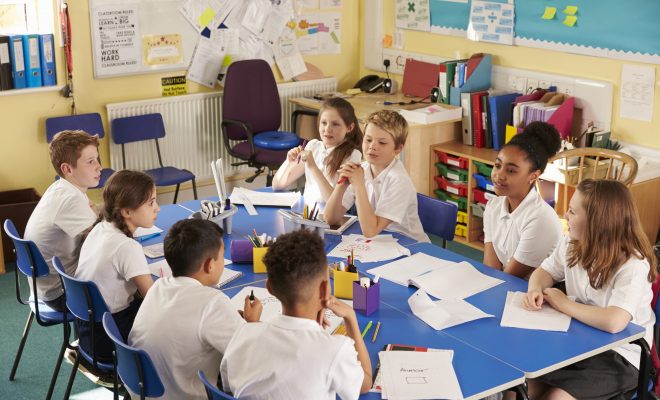
TPaCK Framework: Everything You Need to Know
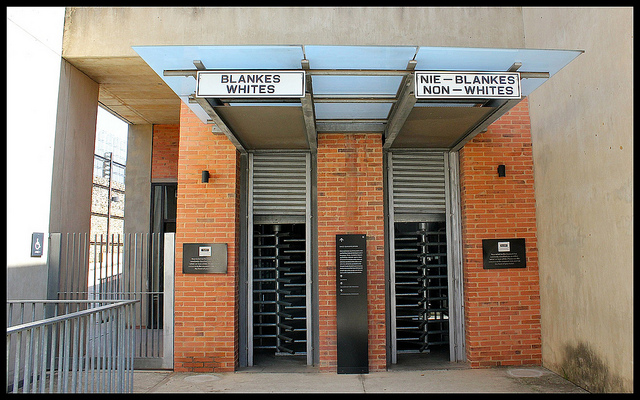
Bridging the gap between school and community
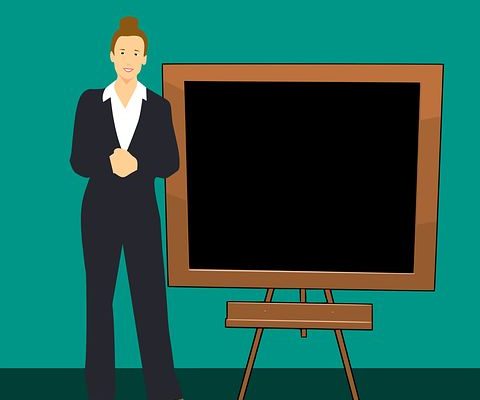
2 Reasons Colleges Need Athletes as Minority Mentors

STEM Learning Must Go Beyond Memorizing Facts and Theories
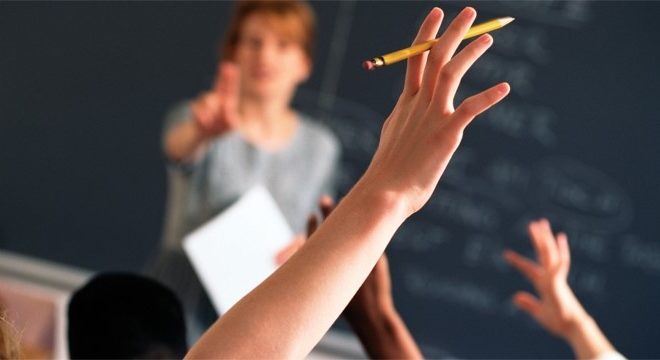
What Giving up on a Student Says About You
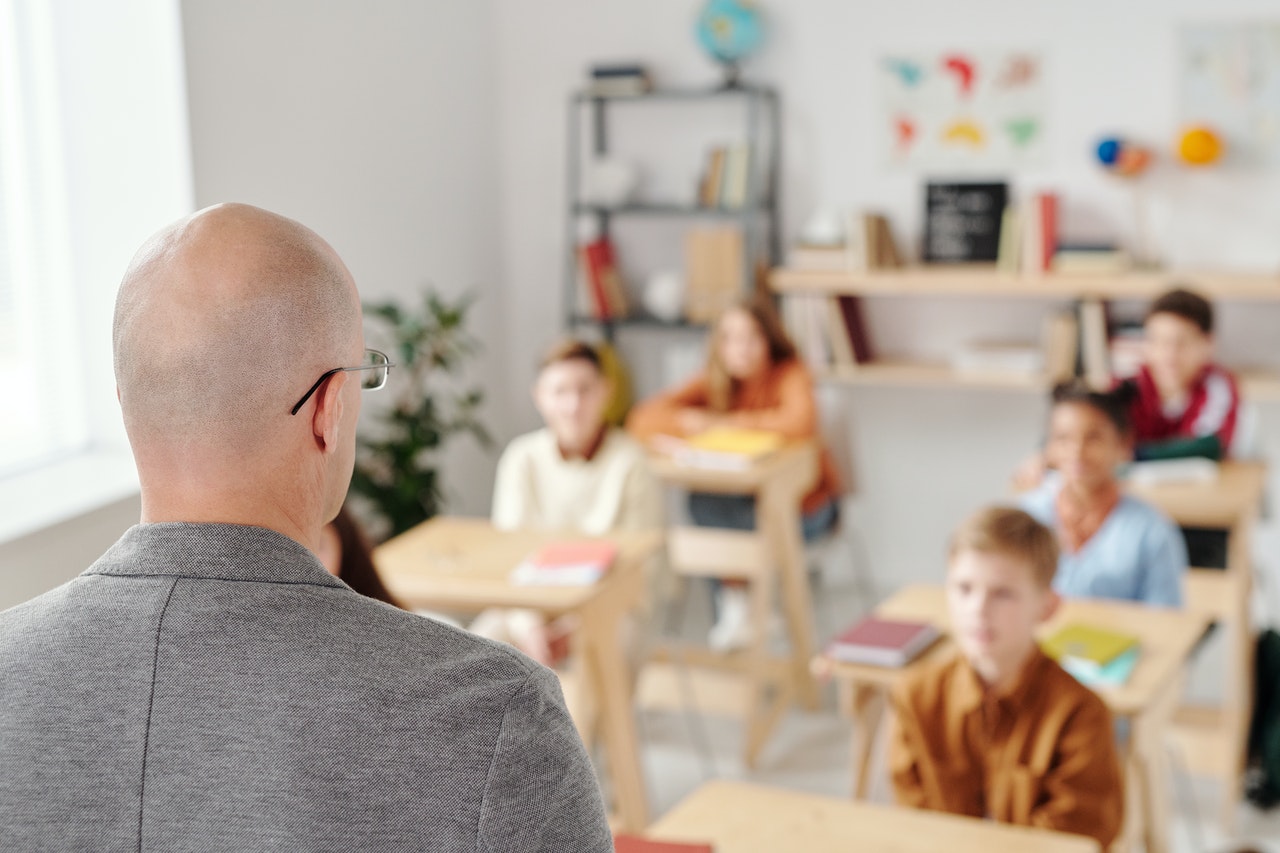
27 Strategies to Help Students Who Blame Themselves for Things Beyond Their Control
Top 10 Challenges to Teaching Math and Science Using Real Problems

- Share article
Nine in ten educators believe that using a problem-solving approach to teaching math and science can be motivating for students, according to an EdWeek Research Center survey.
But that doesn’t mean it’s easy.
Teachers perceive lack of time as a big hurdle. In fact, a third of educators—35 percent—worry that teaching math or science through real-world problems—rather than focusing on procedures—eats up too many precious instructional minutes.
Other challenges: About another third of educators said they weren’t given sufficient professional development in how to teach using a real-world problem-solving approach. Nearly a third say reading and writing take priority over STEM, leaving little bandwidth for this kind of instruction. About a quarter say that it’s tough to find instructional materials that embrace a problem-solving perspective.
Nearly one in five cited teachers’ lack of confidence in their own problem solving, the belief that this approach isn’t compatible with standardized tests, low parent support, and the belief that student behavior is so poor that this approach would not be feasible.
The nationally representative survey included 1,183 district leaders, school leaders, and teachers, and was conducted from March 27 to April 14. (Note: The chart below lists 11 challenges because the last two on the list—dealing with teacher preparation and student behavior—received the exact percentage of responses.)
Trying to incorporate a problem-solving approach to tackling math can require rethinking long-held beliefs about how students learn, said Elham Kazemi, a professor in the teacher education program at the University of Washington.
Most teachers were taught math using a procedural perspective when they were in school. While Kazemi believes that approach has merit, she advocates for exposing students to both types of instruction.
Many educators have “grown up around a particular model of thinking of teaching and learning as the teacher in the front of the room, imparting knowledge, showing kids how to do things,” Kazemi said.
To be sure, some teachers have figured out how to incorporate some real-world problem solving alongside more traditional methods. But it can be tough for their colleagues to learn from them because “teachers don’t have a lot of time to collaborate with one another and see each other teach,” Kazemi said.
What’s more, there are limited instructional materials emphasizing problem solving, Kazemi said.
Though that’s changing, many of the resources available have “reinforced the idea that the teacher demonstrates solutions for kids,” Kazemi said.
Molly Daley, a regional math coordinator for Education Service District 112, which serves about 30 districts near Vancouver, Wash., has heard teachers raise concerns that teaching math from a problem-solving perspective takes too long—particularly given the pressure to get through all the material students will need to perform well on state tests.
Daley believes, however, that being taught to think about math in a deeper way will help students tackle math questions on state assessments that may look different from what they’ve seen before.
“It’s myth that it’s possible to cover everything that will be on the test,” as it will appear, she said. “There’s actually no way to make sure that kids have seen every single possible thing the way it will show up. That’s kind of a losing proposition.”
But rushing through the material in a purely procedural way may actually be counterproductive, she said.
Teachers don’t want kids to “sit down at the test and say, ‘I haven’t seen this and therefore I can’t do it,’” Daley said. “I think a lot of times teachers can unintentionally foster that because they’re so urgently trying to cover everything. That’s where the kind of mindless [teaching] approaches come in.”
Teachers may think to themselves: “’OK, I’m gonna make this as simple as possible, make sure everyone knows how to follow the steps and then when they see it, they can follow it,” Daley said.
But that strategy might “take away their students’ confidence that they can figure out what to do when they don’t know what to do, which is really what you want them to be thinking when they go to approach a test,” Daley said.

Data analysis for this article was provided by the EdWeek Research Center. Learn more about the center’s work.
Sign Up for EdWeek Update
Edweek top school jobs.

Sign Up & Sign In

- Our Mission
Evidenced-Based Practices for Literacy Intervention in Middle School
These practical strategies for building up struggling middle school readers’ literacy skills can help them read more fluently.

As a middle school English language arts teacher for 15 years, I saw my share of struggling adolescent readers. I was often perplexed by how my students could have made it to sixth, seventh, or eighth grade without ever having learned how to read fluently or even crack the alphabetic code with automaticity.
When I moved to instructional leadership at the elementary level, I discovered so much about how kids learn to read and what middle-grades teachers might do to help support their struggling readers.
I was lucky to come to the elementary world when I did. An added perk to the more frequent hugs, faster rates of development, and gentler attitudes, there were some really exciting shifts in primary literacy instruction. A year or two into my work at the elementary level, these shifts had just reached nationwide turning points, helped along by the work of journalist Emily Hanford. Her podcast, Sold a Story , exposed the lack of scientific research supporting the multimillion-dollar balanced reading programs that most elementary schools like mine had been using for decades.
Due in large part to Hanford’s work and recent state legislation , K–2 literacy teachers are making some pretty big shifts that we can all learn from. Namely, we’re discovering how to get better at teaching kids to read with direct and explicit instruction in reading foundations skills. This looks like more focus on decoding (determining spoken sounds from printed text) and encoding (writing printed text from spoken sounds), among other evidence-based practices that are rooted in neuroscience.
So what can middle-grades teachers do with students who may not have received the evidence-based structured literacy instruction most kids need to learn how to read fluently by third grade? The Institute of Education Sciences (IES) has put together an educators’ practice guide with recommendations that can help. Here are three.
Teach kids how to decode multisyllabic words
I remember one student—we can call him Tyler—who wrote in the oversized letters of a much younger child. When reading aloud in small groups, Tyler would use all of his mental capacity to struggle through each word, often trying to guess using the word’s first letter. Unfortunately for Tyler, and so many others like them, his inability to decode graphemes (letter symbols) with their corresponding phoneme (unit of sound) left him at a loss as words and sentences grew more and more complex.
For adolescent readers who struggle with decoding, the goal now must be rapid acceleration in learning. They have so much time to make up; we cannot keep them working at the primary level of consonant-vowel-consonant decoding (CVC)—e.g., cat . These students need to now work with multisyllabic words in order to access grade-level texts.
This means first assessing our struggling older readers and then creating an inventory of sound patterns they do know, in order to build off their successes and breed more success. Tyler despaired regularly with the same line: “I can’t read.” If I had had a list of letter-sound patterns at the time, I would have been able to point to what Tyler could read and then armed him with a routine of word attack.
This routine of word attack might include teaching students how to systematically break words into syllables and then determine the meanings of each word part. These smaller, meaningful parts of words are often called morphemes . For students like Tyler, learning common prefixes, suffixes, and Greek/Latin roots can help give them strategies to decode longer multisyllabic words in context.
Teach kids How to read fluently
Students like Tyler who struggle with decoding are rarely able to read fluently. Since working in an elementary school, I have learned that fluency includes three components: rate, accuracy, and prosody, or reading with appropriate expression.
Teachers of older students who struggle with reading can help them become fluent readers by using repeated readings of grade-level complex texts. Each new reading should be purposeful and intentional and should provide opportunities for students to engage in new thinking while gaining practice with becoming fluent readers of text that will become more familiar and accessible with each repeated reading.
Teachers can also prepare students for building their reading fluency by supporting their work with word attack strategies before they read the complex text in its entirety. This will allow students the opportunity to practice decoding multisyllabic words and prepare them for understanding longer words in context, so that they don’t stumble when they come to them. Modeling fluent reading of text and choral reading routines will also serve to help support older students who are still working toward becoming fluent readers of their grade-level texts.
teach comprehension strategies while building knowledge
For Tyler, many grade-level texts were incomprehensible. He spent so much mental energy trying to eke out each individual word, his reading was choppy and halting, and he had limited cognitive capacity left for understanding.
What we are learning now is that comprehension is not a skill taught in isolation, but rather the result of having strong background knowledge in a topic. A colleague of mine has often used the example of reading complex medical texts compared with texts on pedagogy. We know enough about pedagogy to understand the jargon, make inferences, connect to new ideas. Reading new research on appendectomies, however, would leave many of us with some gaping holes in our understanding.
Likewise, background knowledge is critical for developing our students’ comprehension skills. This is why, in addition to supporting students’ accelerated development in decoding and fluency, middle-grades teachers should focus on reading a lot about a single topic rather than a lot of texts about a variety of unrelated topics.
For example, in one high-quality curriculum resource, EL Education , seventh graders spend a quarter of the year digging deep into epidemics. They spend the first three weeks reading a wide variety of nonfiction texts, building their domain-specific vocabulary, applying close-reading skills, and engaging in discourse around this single topic. The added benefit to this topic-based learning is the potential for collaboration with science, social studies, or arts teachers, which could aid students’ reading comprehension in other classes as well.
And their success breeds success: When students know something about what they’re reading, they will recognize the words and syntax, read more fluently, and ultimately better comprehend what they’re reading.
Teachers of early adolescents can take heart that the recent changes in elementary school should mean that fewer and fewer students will come to them as struggling readers. In the meantime, these age-appropriate, evidence-based practices can help shore up students’ reading skills if they missed explicit phonics, fluency, and knowledge-building instruction in primary grades. These practical strategies can help empower teachers to support their students’ independence as they prepare for high school reading and beyond.

COMMENTS
Problem-Solving Skills for Kids: Student Strategies. These are strategies your students can use during independent work time to become creative problem solvers. 1. Go Step-By-Step Through The Problem-Solving Sequence. Post problem-solving anchor charts and references on your classroom wall or pin them to your Google Classroom - anything to make ...
Elementary students practice problem-solving and self-questioning techniques to improve reading and social and emotional learning skills.
1. Link problem-solving to reading. When we can remind students that they already have many comprehension skills and strategies they can easily use in math problem-solving, it can ease the anxiety surrounding the math problem. For example, providing them with strategies to practice, such as visualizing, acting out the problem with math tools ...
Palmer et al. (2004) found that students with autism to gain skills in problem. students improved in their problem-solving solving, goal setting, self-evaluation, and goal. skills and significandy increased their success in attainment. Four research questions (Cote, inclusive settings.
Make students articulate their problem solving process . In a one-on-one tutoring session, ask the student to work his/her problem out loud. This slows down the thinking process, making it more accurate and allowing you to access understanding. When working with larger groups you can ask students to provide a written "two-column solution.".
Problem-solving is an essential skill for elementary students as they navigate the challenges of their daily lives. By teaching them how to identify problems, evaluate solutions, and make decisions, we empower them to become more resilient and independent thinkers.
Students need strong problem-solving skills for academic and career success. Educators can begin teaching these skills with a quality problem solving assessment.
The following are five activities elementary teachers can use to teach problem-solving to students. Teaching students to identify the possible solutions requires approaching the problem in various ways.
Problem-solving skills are necessary in all areas of life, and classroom problem solving activities can be a great way to get students prepped and ready to solve real problems in real life scenarios.
Many instructors design opportunities for students to solve "problems". But are their students solving true problems or merely participating in practice exercises? The former stresses critical thinking and decision making skills whereas the latter requires only the application of previously learned procedures.
Teachers can foster critical thinking in the early elementary grades by guiding students to develop their conversation skills.
Learn some tips and ideas to teaching about the strategies and steps to problem solving in math in this blog post, and grab a freebie to get you started!
Problem solving isn't only about math equations. There are several social problems that students experience during a school day. These are problems that involve interactions with the school community. Beginning in elementary school, teachers must teach problem solving skills to help students feel confident to handle social interactions independently.
Whether it's a toy-related conflict, a tough math equation, or negative peer pressure, kids of ALL ages face problems and challenges on a daily basis. Use these effective strategies and activities to teach your children and preteens important problem-solving skills.
Problem-solving skills are essential — they empower students to navigate the challenges they encounter throughout their academic and personal lives. While it may seem like a complex concept for elementary students, fostering these skills from a young age is crucial for their cognitive development and future success. In this blog post, we'll explore the significance of teaching problem ...
There are many different projects to present to students that will help them develop problem-solving skills. Here are a few you might consider offering your students: Fancy Feet: Fancy feet involves statistics and measuring. First, students measure foot sizes of other students, staff, and even family members.
Problem-solving skills are essential to math in the general classroom and real-life. They require logical reasoning and critical thinking skills. Students must be equipped with strategies to help them find solutions to problems.
The aim of this study was to map whether a teaching approach, which focuses on teaching general heuristics for mathematical problem-solving by providing visual tools called Problem-solving Keys, would improve students' performance in tasks and skills in justifying their reasoning.
Use these activities to help your young students develop problem-solving skills, understand abstract concepts and encourage math talk in your classroom.
Thinking Skills. Skills aimed at aiding students to be critical, logical, and evaluative thinkers. They include analysis, comparison, classification, synthesis, generalization, discrimination, inference, planning, predicting, and identifying cause-effect relationships. Can you think of any additional problems solving techniques that teachers ...
Problem-solving skills are critical for elementary school students, as they are trained to be problem solvers from an early age (Adel Al-khati, 2012; Yayuk et al., 2020; Mirici & Uzel, 2019).
Overview. Problem-based learning (PBL) is integrated at Two Rivers Public Charter School in Washington, DC, at every grade level—pre-K through eighth grade. Students are presented with a real-world problem, undertake a series of investigations, and create a product that they present to an authentic audience as part of the Expeditionary ...
Using a problem-solving intervention and the Self Determined Learning Model of Instruction, three elementary age students with autism were taught to set personal goals related to their academic achievement, identify problems, and self-evaluate their problems-solving skills.
Ensuring students' career readiness is a top priority for districts.
Nine in ten educators believe that using a problem-solving approach to teaching math and science can be motivating for students, according to an EdWeek Research Center survey.
These practical strategies for building up struggling middle school readers' literacy skills can help them read more fluently.